- What Is an Enterprise SEO Audit?
- Enterprise SEO Audits vs. SEO Audits
- Enterprise SEO Audit Checklist
- 1. Keyword Targeting
- 2. Site Duplication
- 3. Crawlability and Indexability
- 4. URLs
- 7. H1s
- 8. Internal Links
- 9. Mobile-Friendliness
- 10. Page Speed
- 11. Sitemap
- 12. Backlinks
- 13. Content Quality
- 14. Images
- 15. 4XX Status Codes
- 16. Structured Data
- 17. Redirects
- Audit Enterprise Sites to Improve SEO Rankings
What Is an Enterprise SEO Audit?
An enterprise SEO audit is a comprehensive review of an enterprise business’s website to identify issues affecting organic search rankings.
Enterprise SEO audits are both content audits and technical SEO audits. This means they cover the full range of ranking factors that can affect SEO performance, from keyword targeting to mobile friendliness.
The goal is to find any problems that might be holding your SEO strategy back from success. You can then address these problems to increase organic traffic.
Enterprise SEO Audits vs. SEO Audits
Both enterprise SEO audits and regular SEO audits check for similar problems.
But there’s a key difference.
Enterprises have larger websites than small and medium businesses (SMBs). The ، the website, the more complex the SEO audit will be.
Enterprise websites can have thousands of pages and complicated structures, which means it would be too time-consuming to check them all manually.
Plus, enterprise businesses have multiple teams or departments. Many more stakeholders are involved in problem-solving and decisions. This is why it’s essential to use SEO tools to complete enterprise audits.
You’ll need access to the best SEO tools to overcome the challenges mentioned above and get the most from an enterprise-level SEO audit.
The following tools will help you inspect, analyze, and optimize your website quickly so you can digest insights:
- Google Analytics: A free website analytics platform from Google that shows how visitors arrive, interact with, and leave your website. Learn how to get started with Google Analytics in our guide: Google Analytics for Beginners.
- Google Search Console: Another free Google platform that offers insights into what keywords your website ranks for and how many organic visitors it attracts. Read our Ultimate Guide to Google Search Console for a full explanation.
- PageSpeed Insights: A free online tool to scan URLs on your website for an overview of page load speed, including advice on essential improvements. Get a full breakdown of how to use it in our PageSpeed Insights walkthrough.
- Backlink Analytics (Semrush): An effective backlink analysis tool that lets you view your entire backlink profile and explains the impact of each link on your rankings. You can also track any domain’s backlinks and identify the authority of linking domains.
- On-Page SEO Checker (Semrush): An on-pageoptimization tool that generates ideas to improve content quality and SEO on a page-by-page basis. It benchmarks the page against your rivals, providing information on their performance—and what you can do to make your page more competitive.
- Google’s Structured Data Markup Helper: Google’s structured data tool makes it easier to add structured data to a webpage. You may need to complete this task after running an audit, and this tool will help you get it done.
- Semrush Organic Research: This tool helps you find your competitors’ best keywords and discover new organic competitors.
The tools listed above can help with specific sections of an enterprise audit, but if you want an all-in-one solution, check out the Semrush Site Audit.
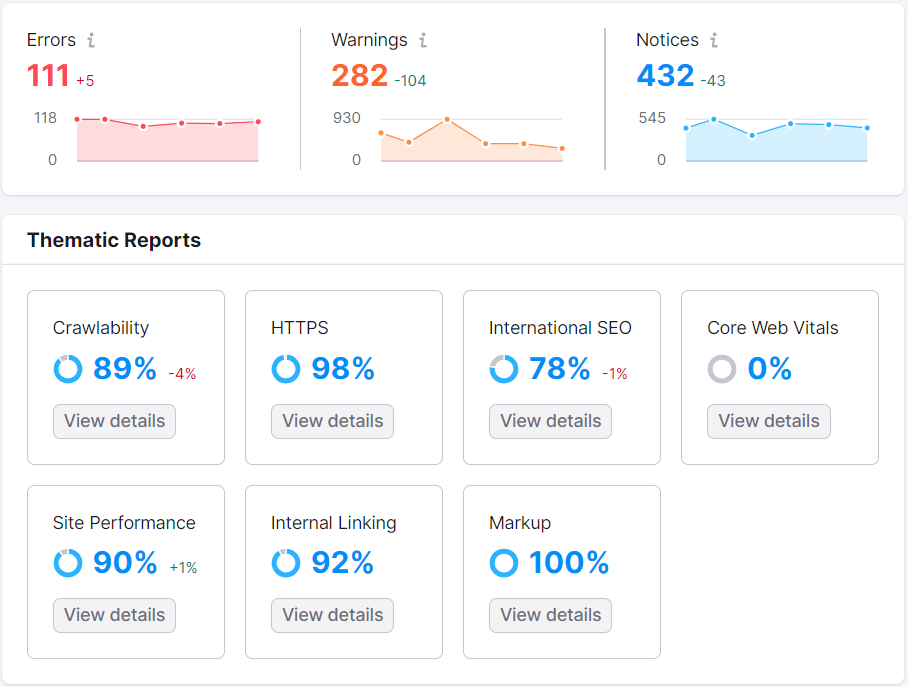
A complete website crawler and audit platform, Site Audit covers over 140 common technical issues or content problems that affect SEO performance, such as slow website speed or duplicate content.
But it doesn’t just flag issues—it provides actionable solutions.
We’ll explain how to use Site Audit to tackle various checkpoints in enterprise SEO analysis in the next section.
Enterprise SEO Audit Checklist
Many factors affect SEO performance. An enterprise SEO audit should work through them one by one to make sure you don’t miss any opportunities on your website.
The following enterprise SEO audit checklist covers the key things to check in your audit:
1. Keyword Targeting
Use an audit to check that your keyword rankings align with your strategy and uncover keyword targeting issues to resolve.
With thousands of pages across an enterprise site, manually checking your keyword targeting strategy can be time-consuming.
Instead, use a dedicated keyword rank tracking platform like Semrush Position Tracking.
There are two main issues to look for:
- Position drops: When your page loses ranking positions because of outdated content, stronger competitors, technical issues, or algorithm updates. This can result directly in decreased traffic.
- Keyword cannibalization: When two pages on your website target the same keyword and “cannibalize” each other’s success. They compete for the same ranking positions, meaning neither ranks as well as it would alone.
Semrush’s Position Tracking can help you find both sets of issues.
Its main dashboard gives you a summary of your tracked keywords. Set a date range to see how many pages declined in ranking for their target keyword during that period.

To see which keywords lost positions, select “#1-3,” “#4-10,” “#11-20,” “#21-100,” or “Out of top 100.”
In an enterprise SEO audit, you’ll want to focus on ranking positions for the top 10 pages on your website that generate the most traffic.
Wherever a page’s rankings decline, check its content against top-ranking competitor content for the same topic and keywords.
Seeing what they do better—from meeting search intent to intuitive internal linking—will teach you how to improve your content and increase rankings.
To find keyword cannibalization issues, visit the report built directly into the Position Tracking dashboard. This gives you an overview of cannibalization issues on your site.

Further down the page, you can see the keywords that multiple pages on your site rank for.
You can then work on deoptimizing the pages you don’t want to rank for the keyword, leaving one page to target it.
2. Site Duplication
Duplicate versions of your website harm SEO performance. They make it hard for Google to tell which version to store in their index for ranking purposes.
To avoid any issues, make sure search engines only visit one version of your site.
Depending on how you set your website up, it might be available through different URLs, like:
- https://www.example.com
These URLs look similar, but Google treats them as different websites. And since they have the same pages, they risk causing duplicate content issues.
To check for site duplication, visit each version of your website in an internet browser. It should automatically redirect you to a single version, regardless of which one you visit.
If it doesn’t redirect you, you need to set up site-wide redirects from all of your non-preferred versions to a single preferred version.
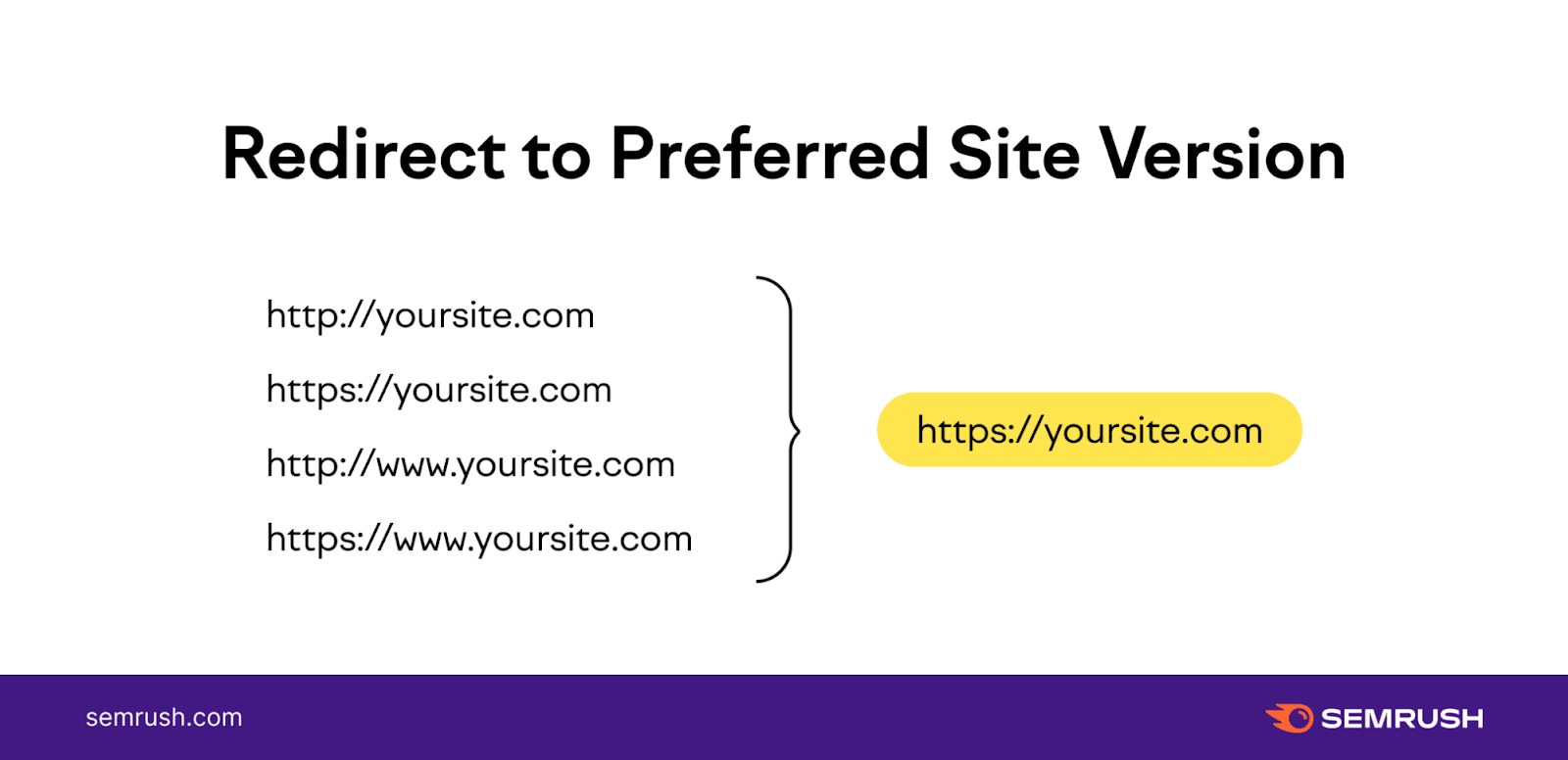
Further reading: Read our full guide to SEO redirects to learn about the different types of redirects and how to implement them.
3. Crawlability and Indexability
To check for any crawlability or indexability issues on your site, run a full website crawl with Semrush Site Audit.
How?
Navigate to Site Audit in Semrush and click “+ Create project.”
Now, enter your domain. Choose to either give your project a name (optional) or let the tool auto-generate a name instead.
Click “Create project.”
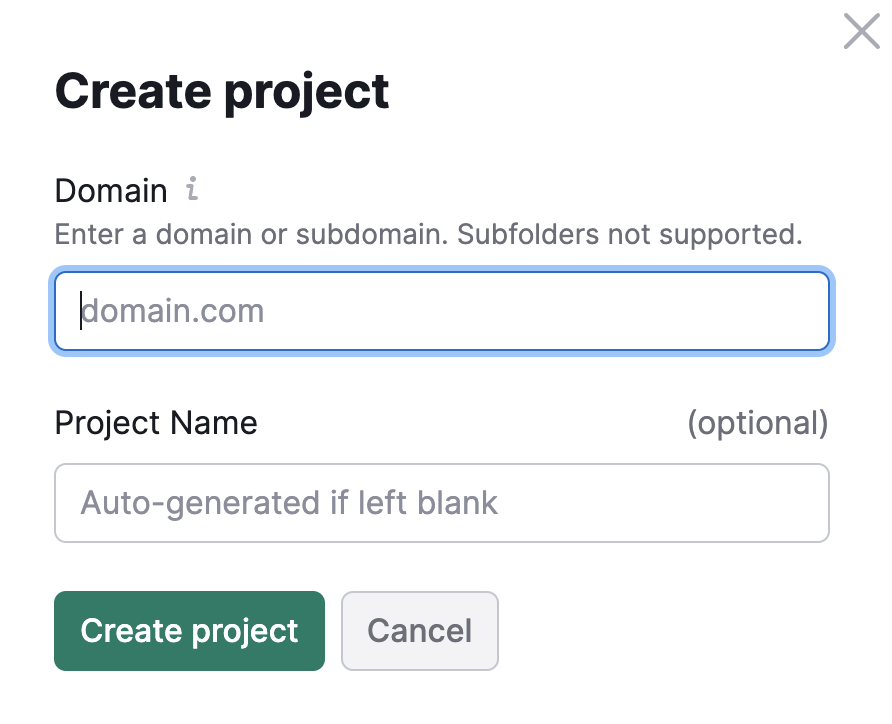
Next, you’ll be presented with a list of Site Audit Settings. The number of pages you’ll be able to crawl depends on your Semrush plan.
For example, with a free account, the tool will crawl up to 100 pages per audit, per month. With a Pro plan, you can crawl up to 20,000 pages per audit (and up to 100,000 pages per month).
If your plan allows, adjust the “Limit of checked pages” so you can audit as much of your site as possible at once.
For your first crawl, we suggest leaving the “Crawl source” setting as “website” since this allows the tool to crawl your website like the GoogleBot. It will start with your homepage and move through the links it sees in your code.
Now, click “Start Site Audit.”

At the end of the crawl, you’ll see a dashboard with potential issues. Click “View details” below “Crawlability” for a more detailed view.
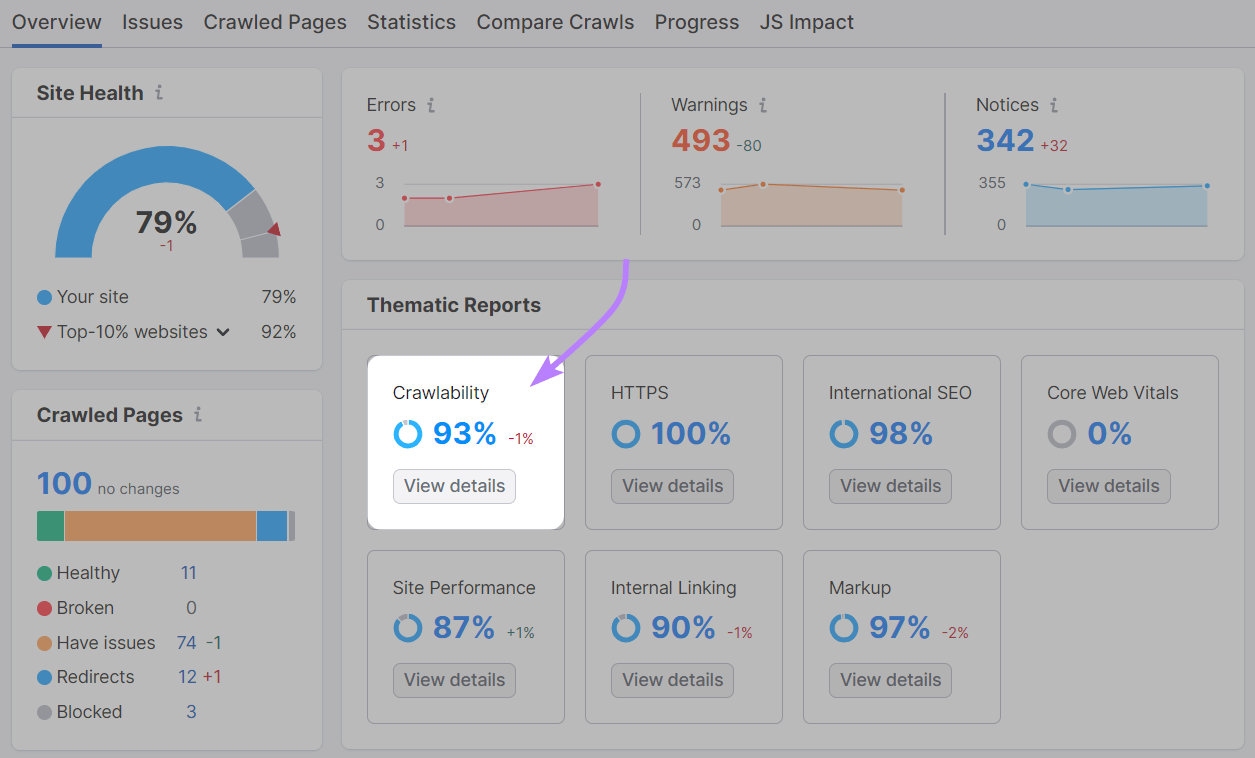
There, it will show you all the issues that could affect the crawlability and indexability of your site.
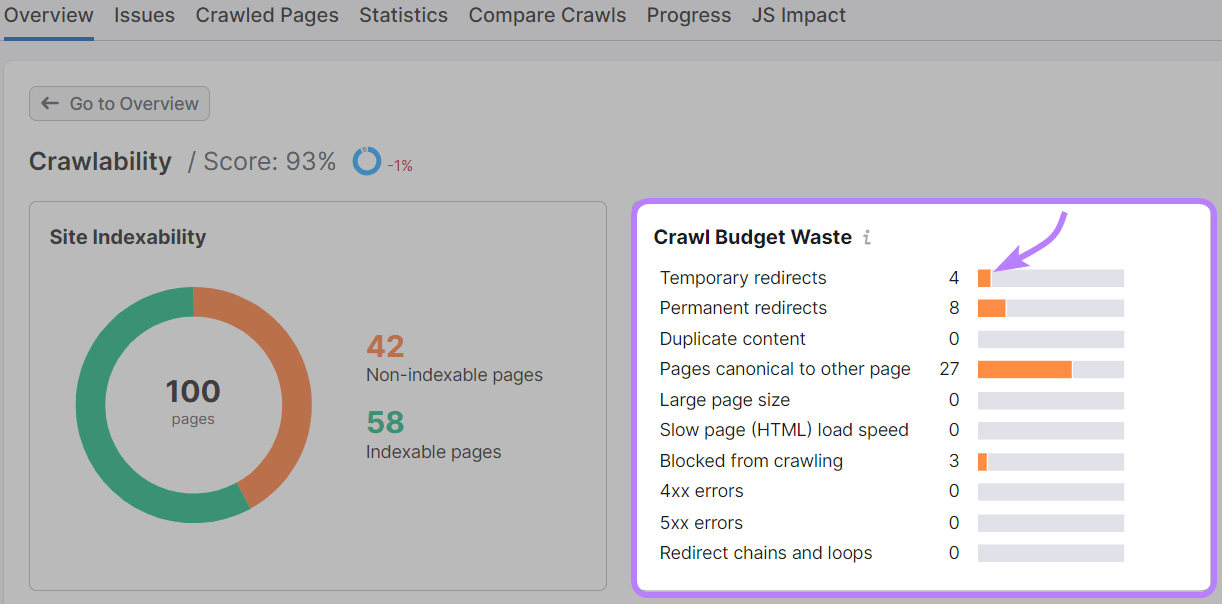
Click on the bar next to an issue in the “Crawl Budget Waste” section for more detail.
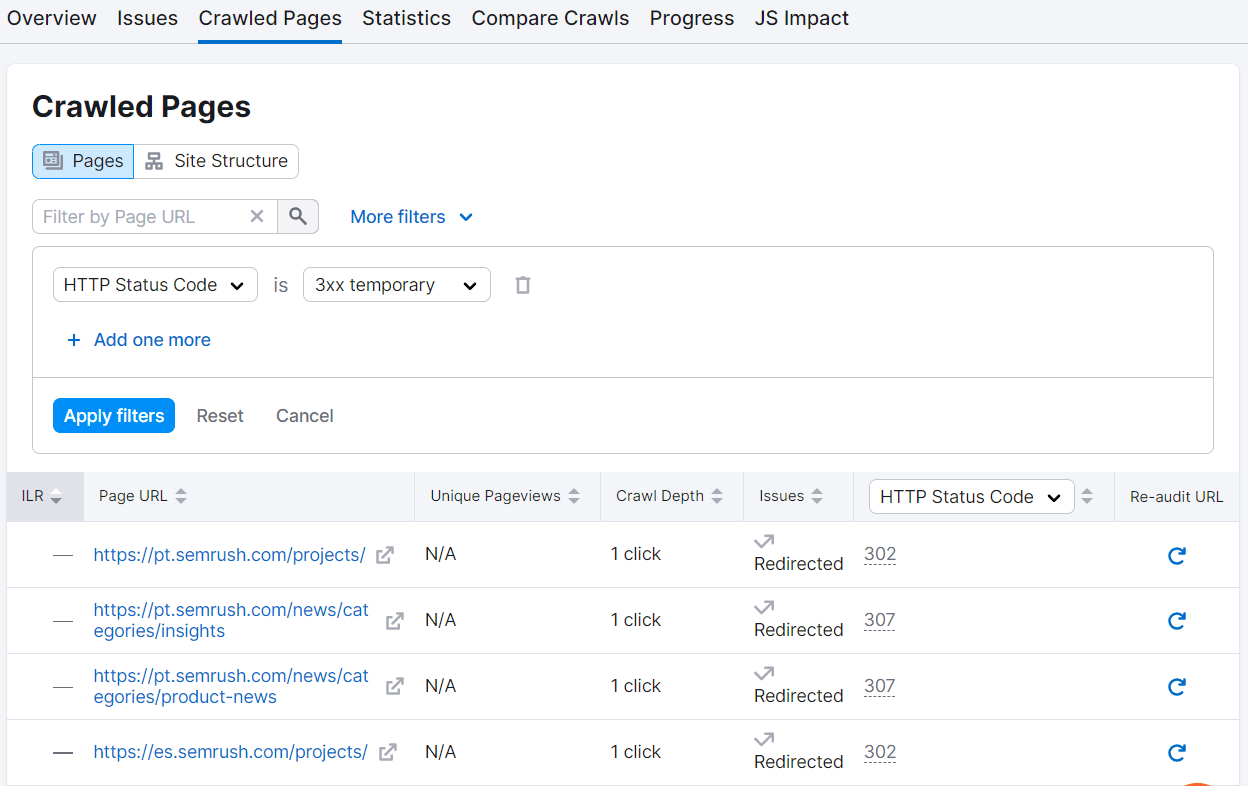
Set your website up to allow Google to crawl and index all the pages you want to rank.
Crawlability and indexability issues can stop this from happening. Find and fix them to make sure all your important pages can rank for their target keywords.
Internal linking problems usually cause crawlability issues.
Why?
Search engine crawlers like Google’s follow links to discover new sections of your website.
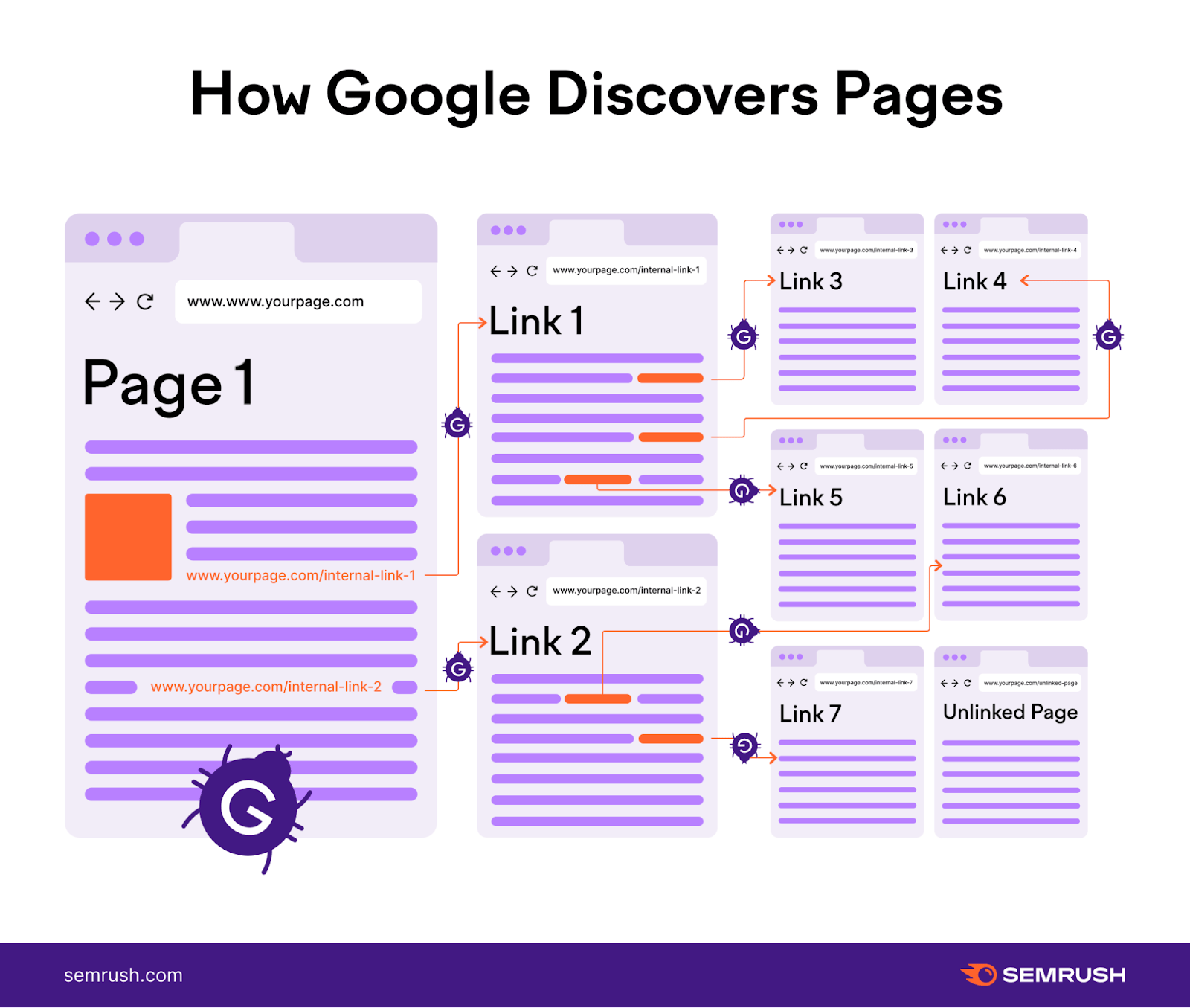
But, if no other pages on the site link to that new page, crawlers can’t find it. This can happen more often on enterprise websites because of their size.
Poor-quality content or incorrect use of the noindex tag can cause indexability issues. These issues stop Google from storing pages in their search index, which means they can’t appear in search results.
4. URLs
Auditing URLs can help you find issues that might harm your ranking performance or confuse visitors. URLs tell internet browsers where to find a specific page. But they also play a role in SEO and user experience (UX).
Google outlines URL best practices in their SEO Starter Guide.
Their tips include:
- Using nested URL subfolders to create a logical site structure
- Ensuring URLs accurately describe the content on the page
- Keeping URLs short and simple, using hyphens between words for readability
You can use Google Analytics to audit URLs across your website. Head to the “Landing pages” report under the “Engagement” subheading to see a list of all of your website URLs.
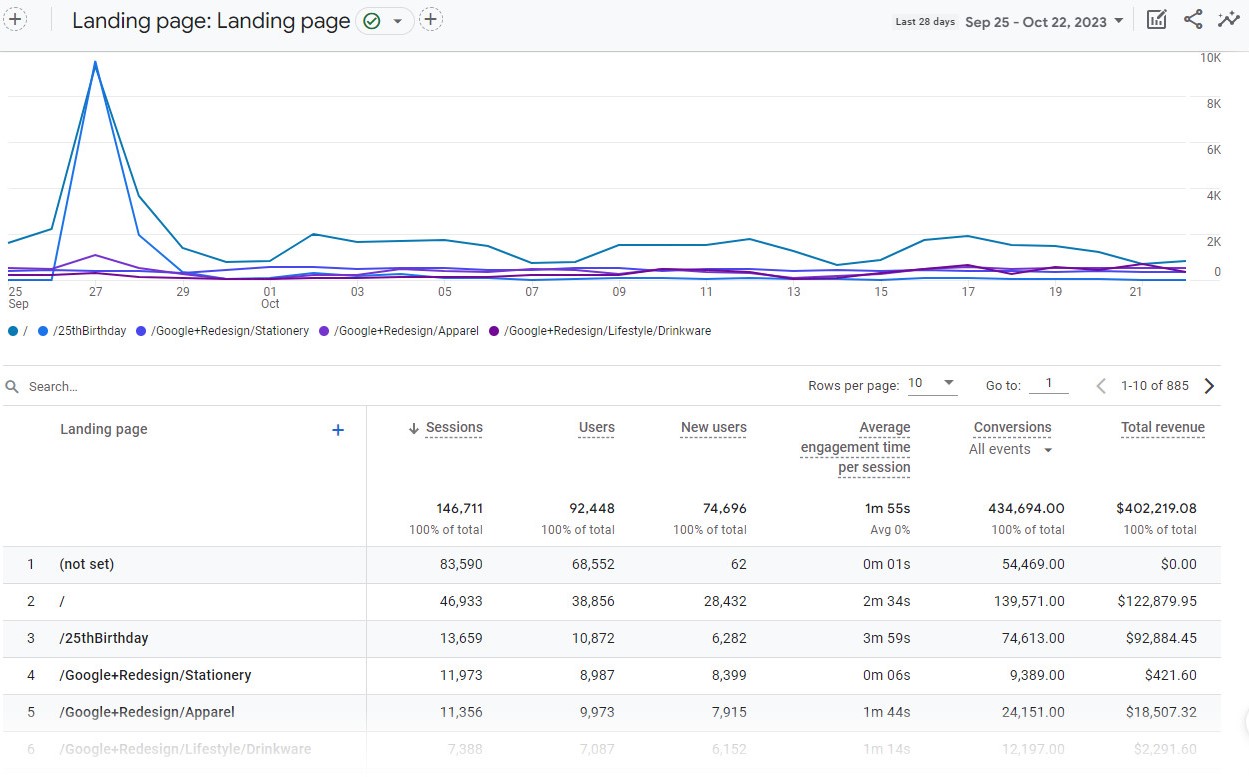
From there, click the share icon in the top right of the screen and click to download the data as a file.

Open the file in Microsoft Excel or Google Sheets and analyze the data.
You can use the LEN formula, which helps you count the number of characters in a cell, to check each URL’s length, filter alphabetically to see the subfolder setup, and check for keyword inclusion.
If you find a URL is too long, you can replace it with a shorter one, but be sure to redirect the old URL to the new page.
Review title tags in your enterprise SEO audit to ensure they’re clear, accurate, and optimized for your target keywords.
Title tags represent your webpages on search engine results pages (SERPs) and can influence both ranking performance and click-through rate (CTR).
Title tag best practices include the following:
- Using 50–60 characters to avoid title tags getting cut off in search results
- Including your primary target keyword without keyword stuffing
- Describing the content of your page clearly and honestly
- Avoiding duplicate title tags on your website with unique title tags for every page
Every page has a title tag, so manually checking them across an enterprise-level site would take a long time.
Instead, use Site Audit’s “Issues” tab to catch the most damaging title tag problems. This report flags duplicate, long, and missing title tags.
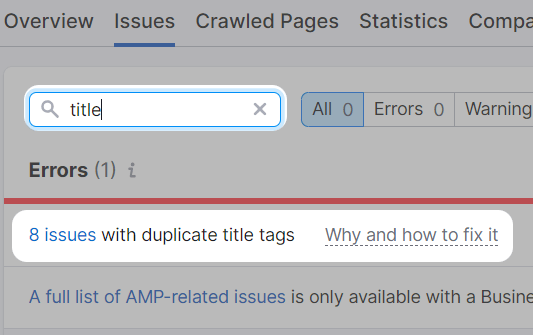
Click on each issue to get a detailed breakdown of which pages need revisiting.

You can then work on updating them to improve SEO performance.
Audit meta descriptions to ensure they’re optimized for search engines and readers. Meta descriptions provide a concise overview of each page’s content. Search engines don’t consider them a direct ranking factor, but they can impact CTR.
We have a full guide to meta description best practices, but the short version is that each one should be:
- Under 105 characters to avoid getting cut short on mobile devices
- Optimized to include the primary target keyword, and any relevant secondary keywords
- Written to accurately describe the page’s content and entice user clicks
- Unique—not duplicated from another page on the site
You can use Site Audit to check for meta description issues, so you don’t need to go through every page manually.
Visit the “Issues” tab in the platform again and scroll through the errors and warnings. It’ll flag both missing and duplicate meta descriptions.
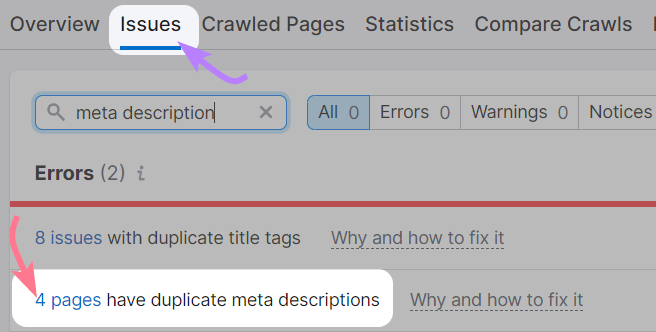
Click on the issues to get a page-by-page breakdown and start working on writing new meta descriptions for the affected URLs.
7. H1s
An enterprise SEO audit is the perfect chance to review H1s and find any opportunities for improvement. H1s act as the title for each page. They tell both Google’s crawlers and real users what the page content is about.
Our guide to H1 tags covers best practices in full, but the most important things to check include the following:
- Every page on your website should have an H1 tag
- No pages on your website have more than one H1 tag
- All H1 tags describe the page content accurately and concisely
- All H1 tags contain the page’s primary target keyword
To write a good H1 tag, use a similar process to writing effective title tags. You can check for issues with them in the same way, too.
Here’s how.
Visit your Site Audit report, navigate to the “Issues” tab, and search for any mentions of “H1.”
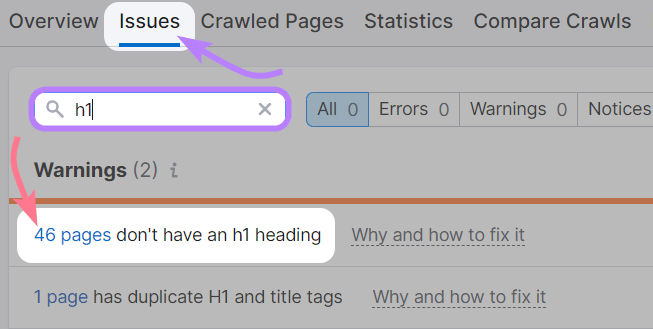
Site Audit will flag any major issues as errors or warnings. This includes pages that don’t have an H1 tag and pages that have more than one H1.
You can then click on each issue to see a breakdown of URLs that need attention and create a plan to fix them.
8. Internal Links
Every enterprise audit should include a review of your internal links. An internal link takes visitors or crawlers from one site page to another. They affect user navigation, providing pathways for users to find the page they want.
But internal links should also tell Google what the most important pages on your website are.
How?
Internal links distribute SEO “authority” around your site.
Authority is another word for PageRank, an important algorithm in Google’s overall formula. Generally speaking, PageRank says that pages with more links from more authoritative sources will perform better than other pages.
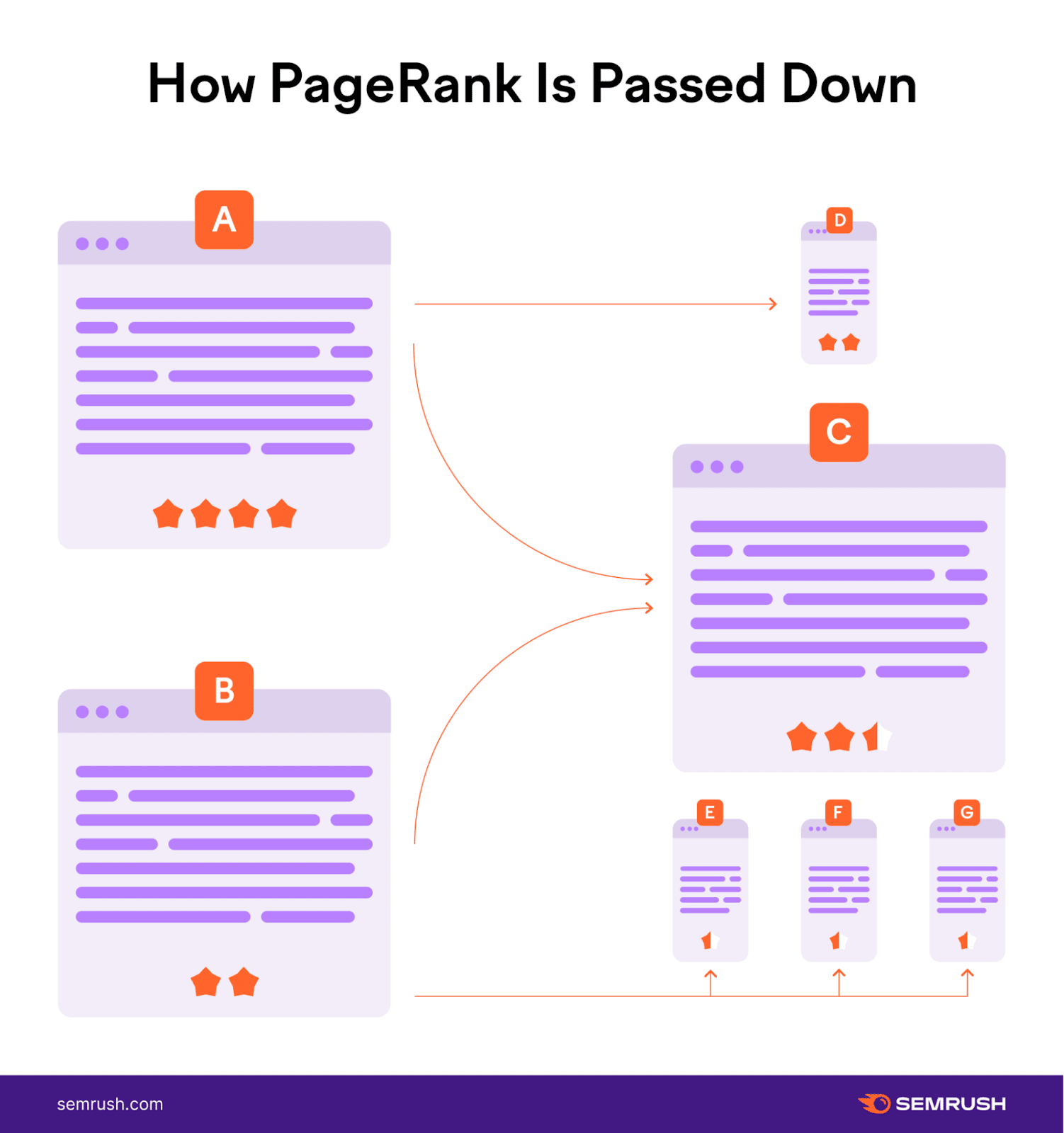
You can use this knowledge to boost specific pages on your website. The trick is to find a way to include relevant internal links to your target pages from the most powerful pages on your site.
You can do this at scale on an enterprise website in the “Internal Linking” section of Site Audit.
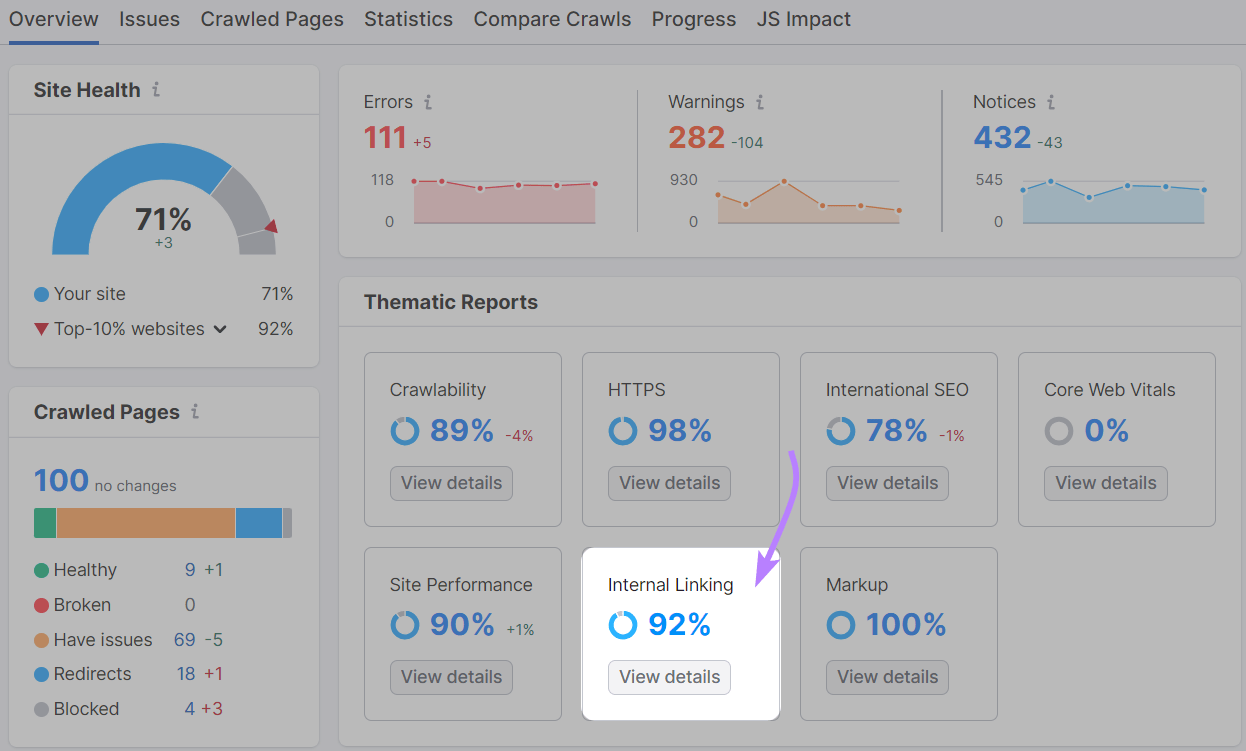
This tool gives you all the information you need to optimize your internal linking strategy for SEO.
The main dashboard flags some basic issues, including pages with no internal links and broken links that lead to non-existent pages.
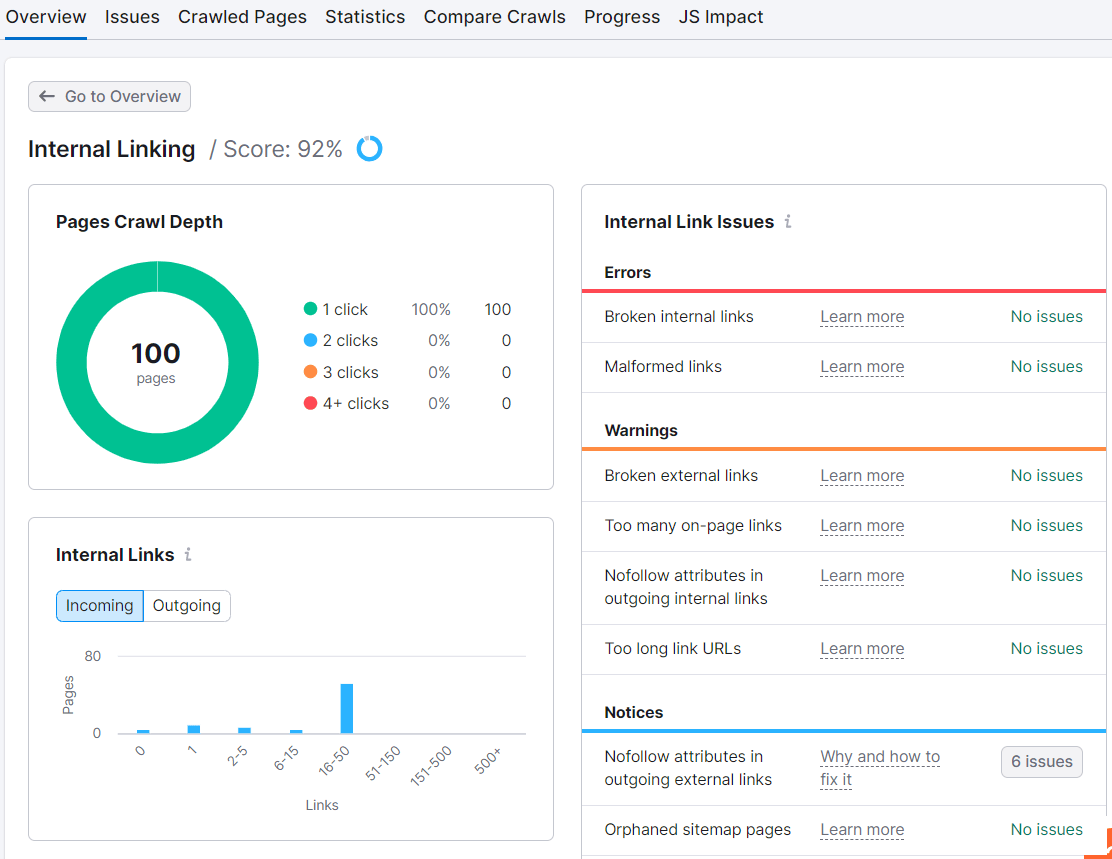
Scroll down to find a table that shows which pages on your website pass on the most authority.
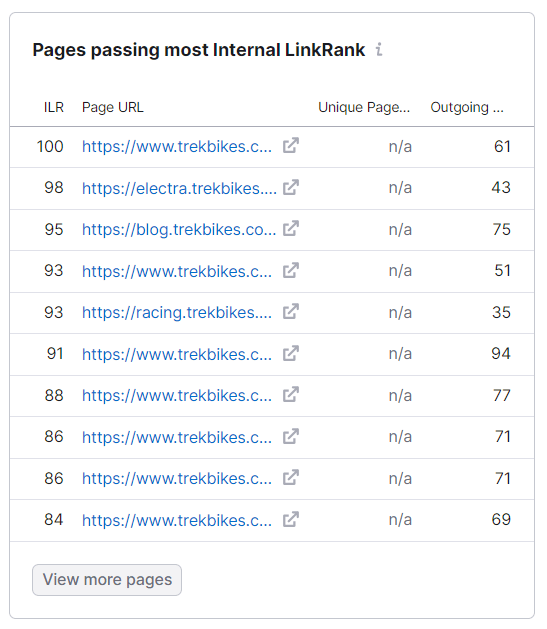
You can use this table to build powerful new links to any underlinked pages on your site.
9. Mobile-Friendliness
Over 60% of organic search traffic comes from mobile devices. And the best way to make the most of this traffic is by making your website user-friendly.
Use your enterprise SEO audit to check mobile SEO and mobile UX optimization.
Google uses mobile-first indexing.
What does that mean?
Mobile-first indexing treats the mobile version of your website as the primary source to decide how to rank your website for target keywords.
Many factors feed into mobile-friendliness, including text size, page load speed, and content formatting. You can use a few free Google tools to test your site for any issues.
Start with the Mobile Usability report in Google Search Console for an overview of your entire site.
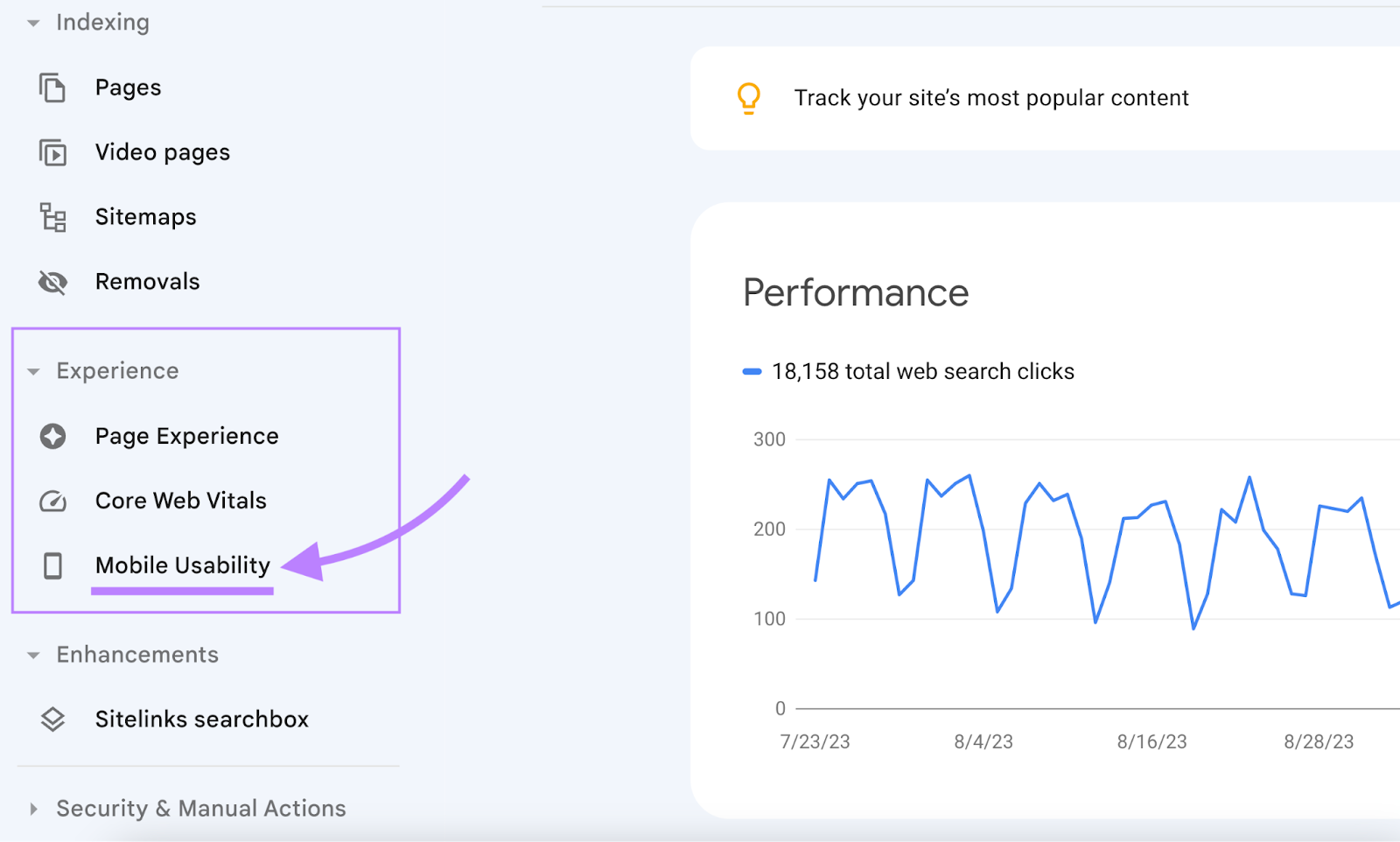
The chart shows changes over time, flagging when issues appeared or were fixed.
Lower down the page, it gives you a breakdown of what specific mobile usability issues affect site performance, including content that’s too wide for the screen and clickable elements that are too close together.
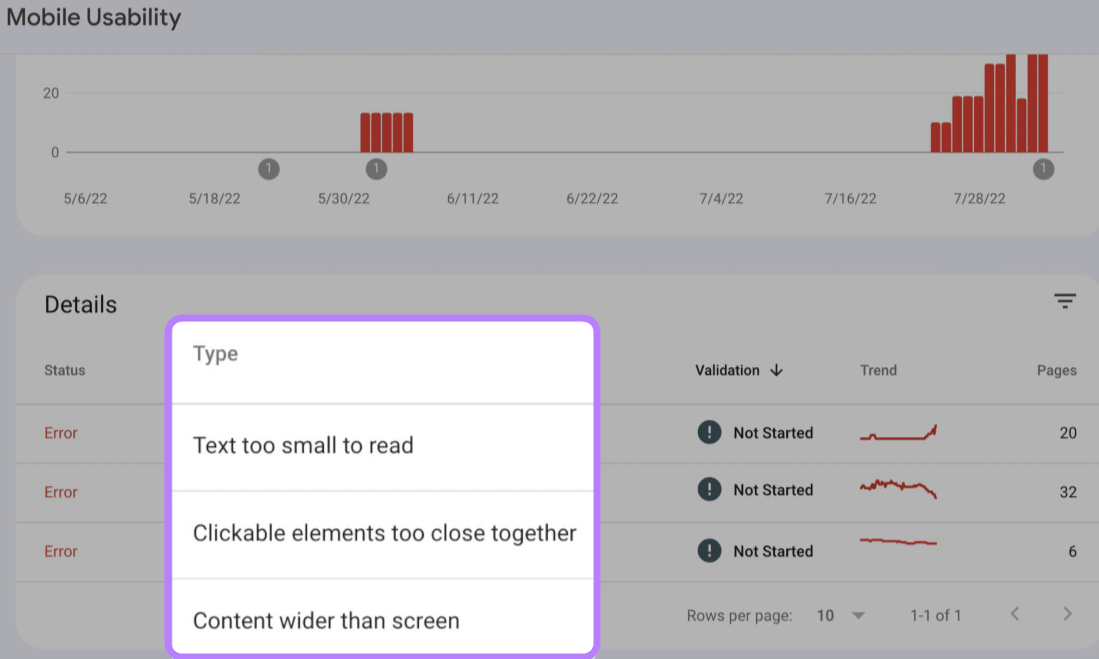
Click on each one to see which pages contain issues.
Google’s Mobile-Friendly Test tool offers the same information, but on a page-by-page basis.
Enter a URL and click “Test URL” to generate a report highlighting overall mobile usability, and any specific issues on the page.
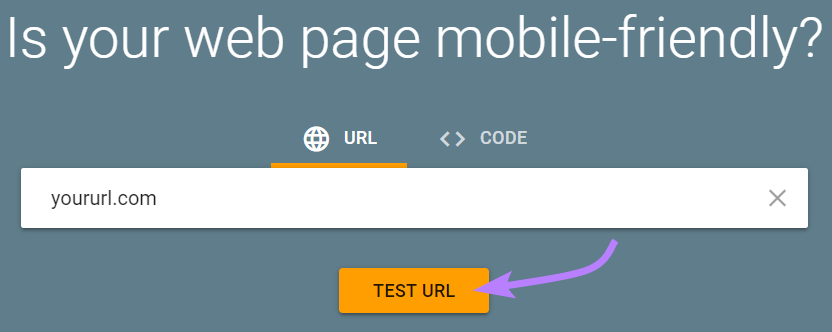
These tools will help you create a full list of pages with mobile usability issues so you can fix them.
10. Page Speed
An enterprise SEO audit gives you the perfect opportunity to analyze page speed across your website and find issues that might harm your ranking performance.
Page speed also impacts bounce rate, or the percentage of people who leave your site without interacting with it. The chance of a user bouncing increases dramatically after three seconds of load time.
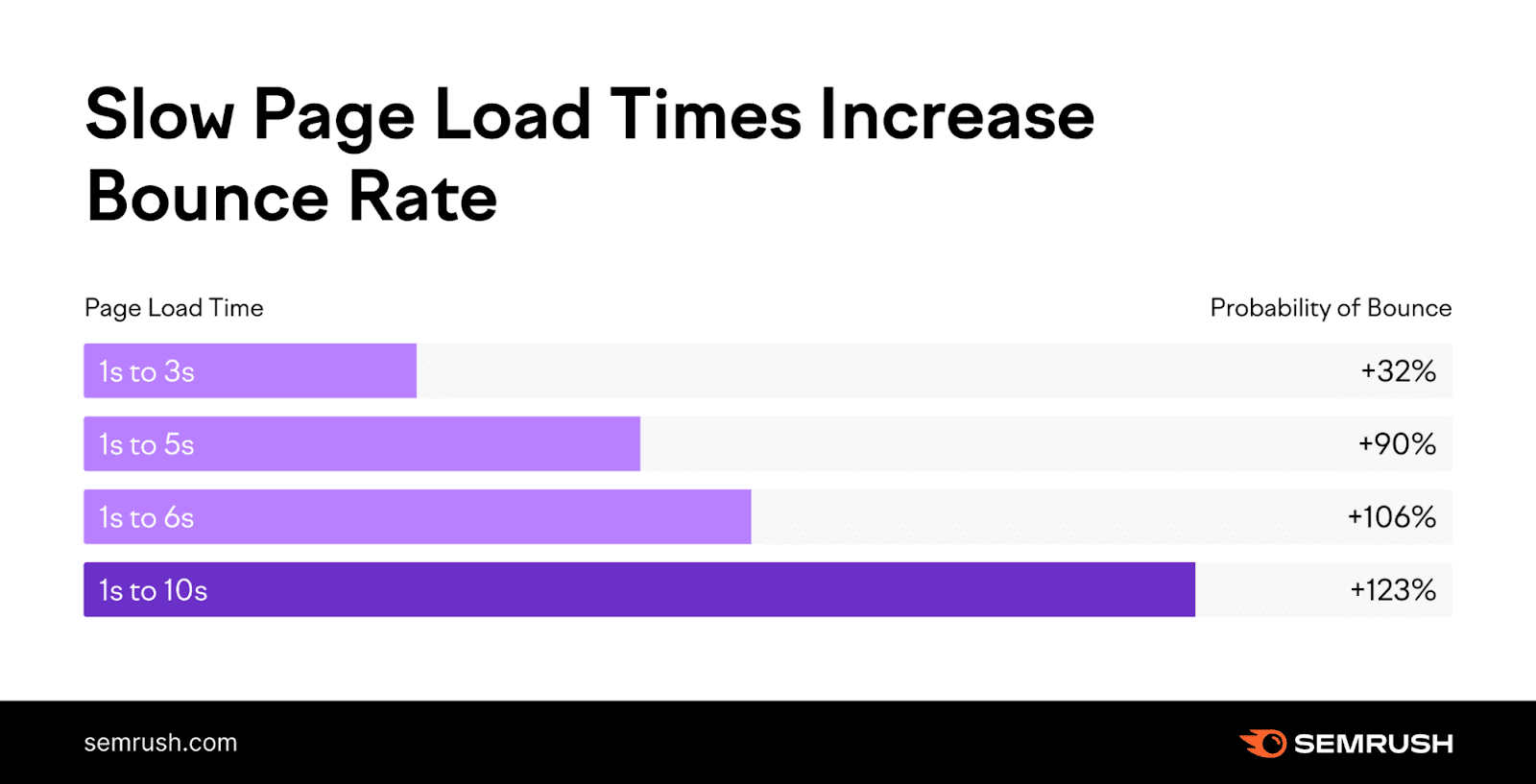
Google uses three metrics to grade page speed, known as Core Web Vitals.
Here’s what each one measures:
- Largest Contentful Paint (LCP): How many seconds it takes for all of your main page content to load
- First Input Delay (FID): How long it takes until a user can interact with a page, measured in milliseconds. Note: This will be replaced by Interaction to Next Paint (INP) in March 2024.
- Cumulative Layout Shift (CLS): How much the content shifts while the page loads
You will get a “Good,” “Needs Improvement,” or “Poor” rating for each.
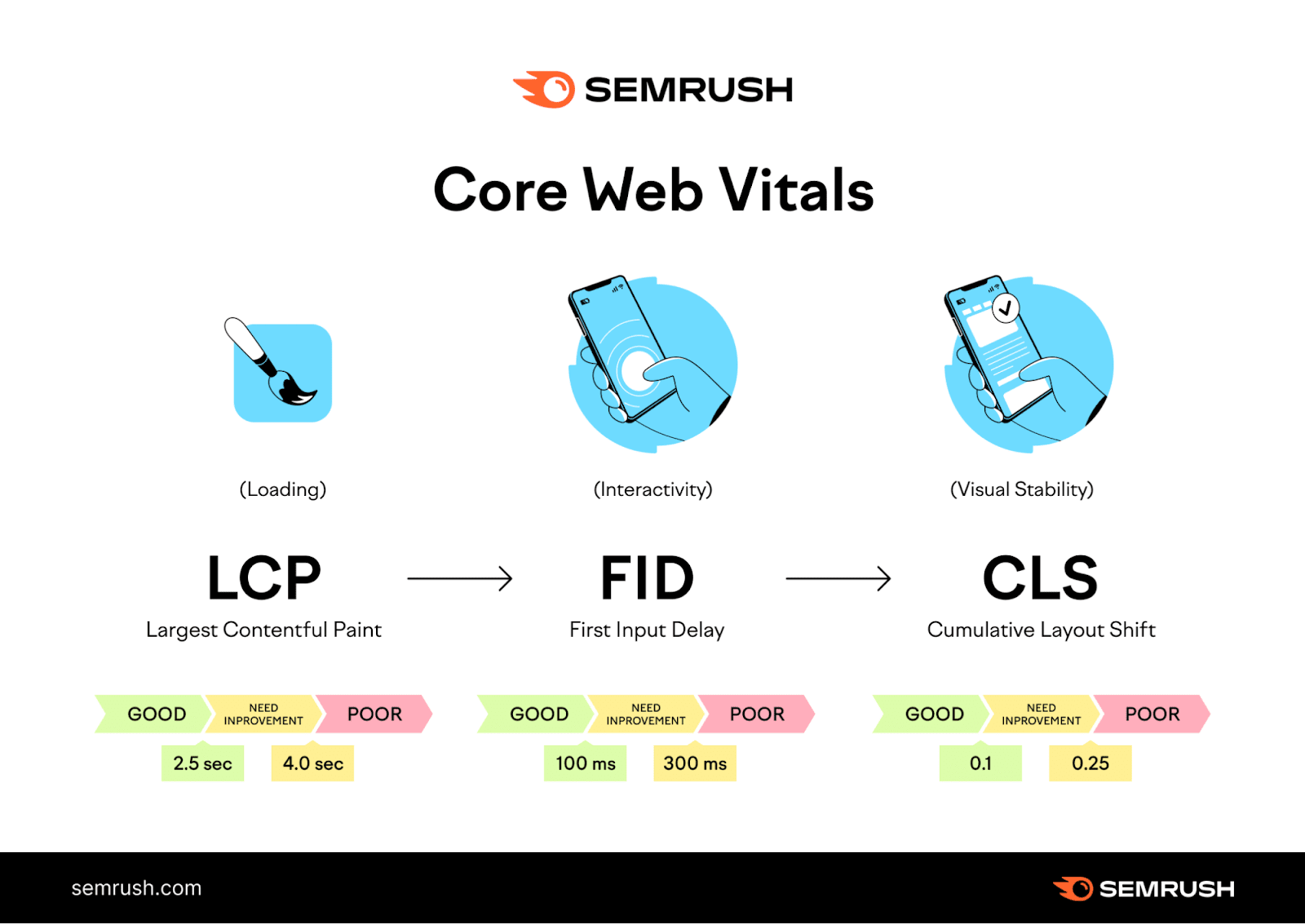
Core Web Vitals help you gauge page speed performance, and Google provides multiple ways to check LCP, FID, and CLS.
Google Search Console includes a dedicated Core Web Vitals report, which provides a full performance overview.
The main dashboard shows URL performance using the three rating categories mentioned above. You can get a report for both mobile and desktop speed.
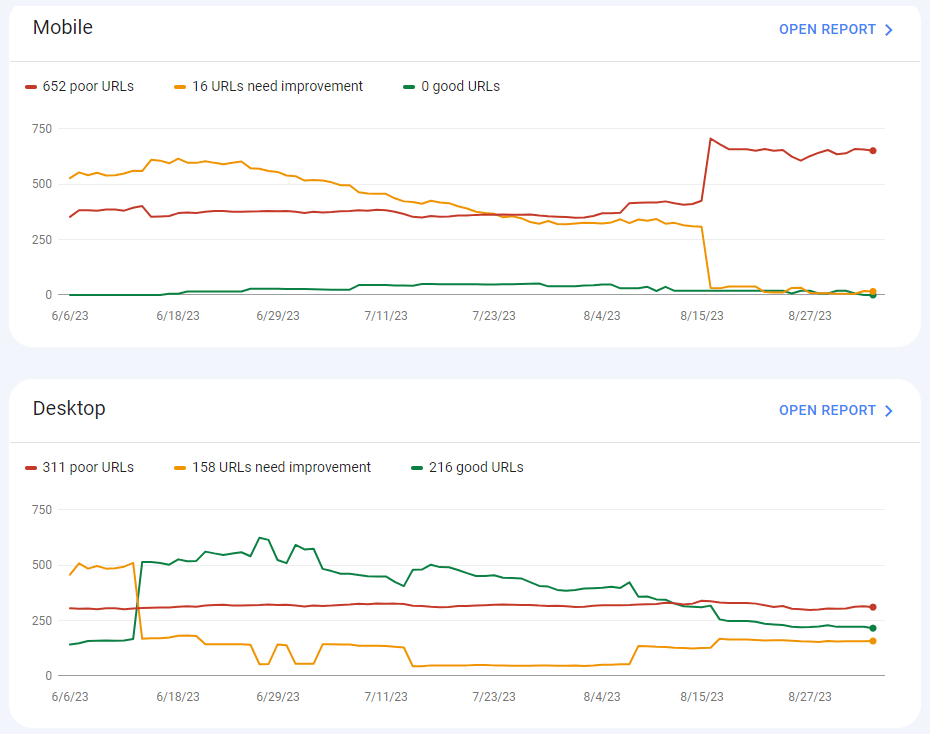
You can then dive into one of these reports for more detail, including complete lists of URLs in each category.
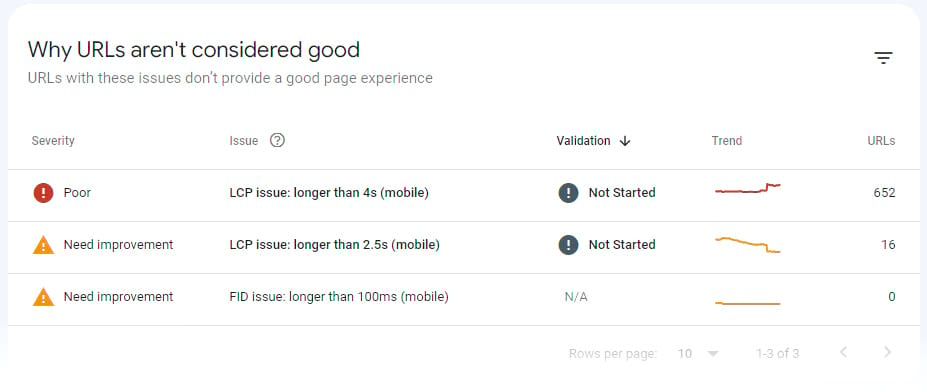
If you just want to check individual URLs, you can use Google’s PageSpeed Insights tool.
The PageSpeed Insights report shows a “Pass” or “Fail” result and a performance summary for each of the three Core Web Vitals metrics.
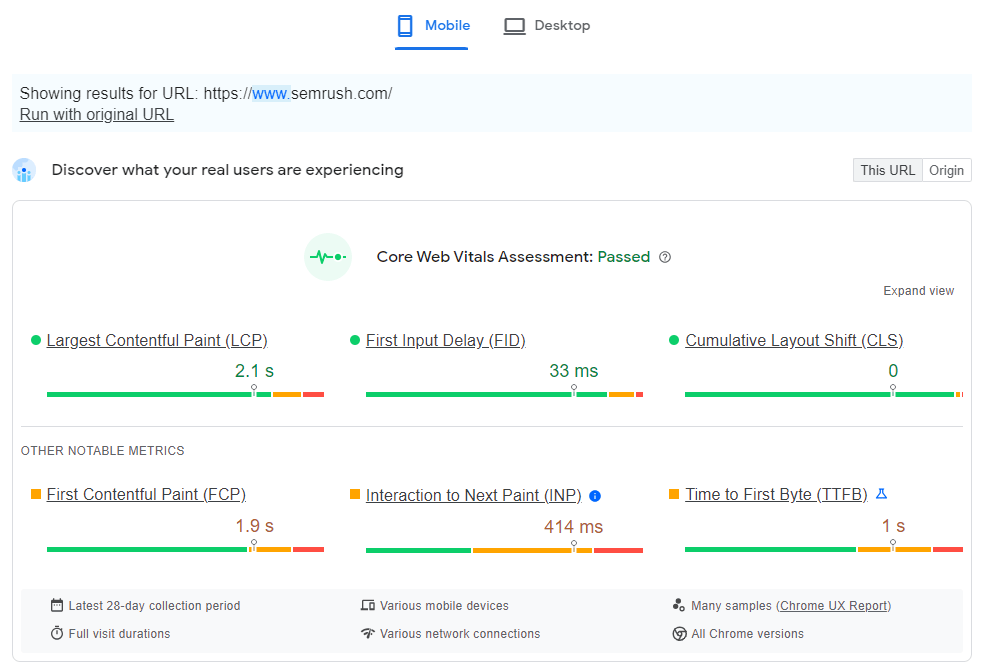
Further down the page, it offers specific suggestions for improving page speed and estimates how much time each opportunity will save.
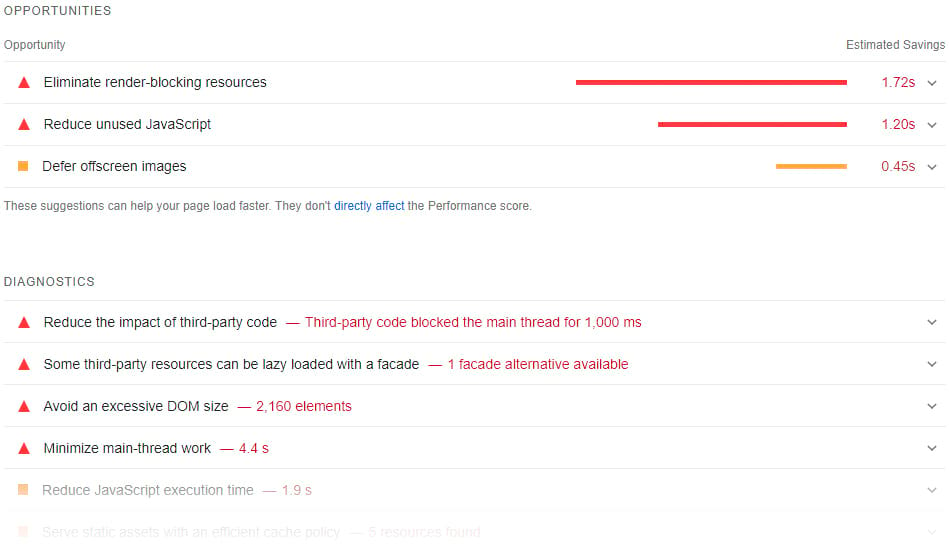
Site Audit also includes a Core Web Vitals report. This provides another way to get an overview of site speed, with recommendations built into the report.
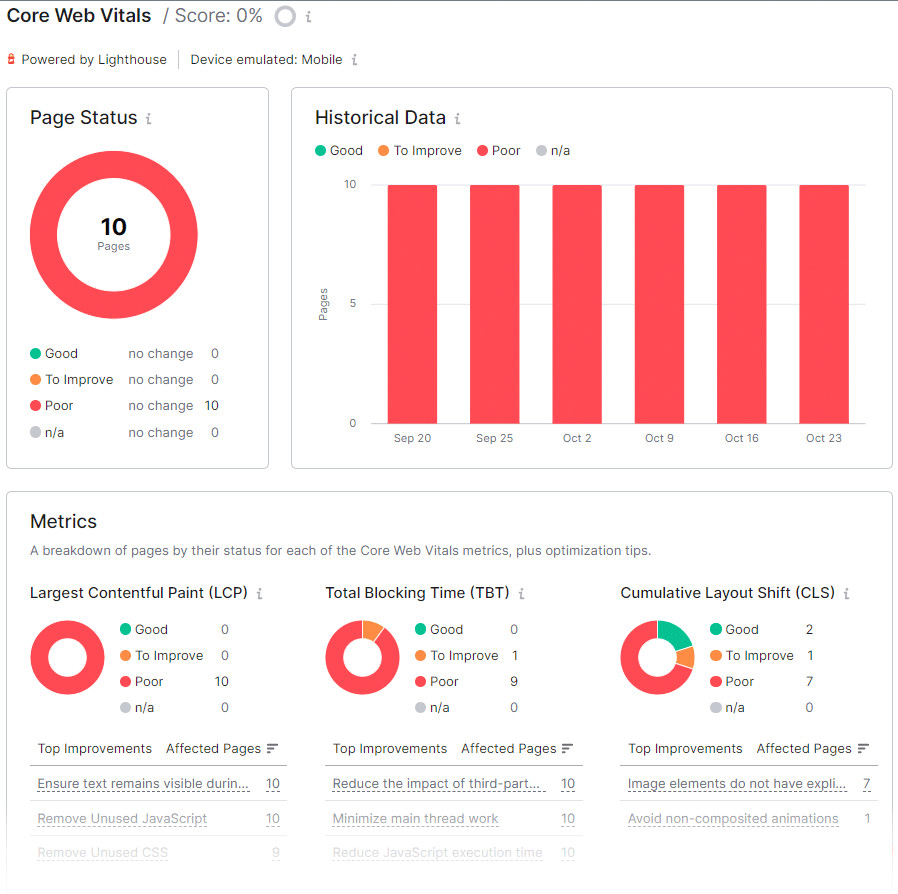
This is the best way to audit Core Web Vitals for an enterprise website, saving you from analyzing URLs one by one to develop solutions.
11. Sitemap
A sitemap contains a full list of pages on your website. Google uses these maps to understand your site’s structure.
During your audit, check that search engines can crawl your sitemap. Also, check the setup of your sitemap to ensure search engines can see all the pages you want them to index.
Google may struggle to find all the pages on a larger site without a sitemap to follow. This makes having a proper sitemap setup even more critical.
To check your sitemap for issues, you have a few options:
The easiest way is to look for it manually. You can usually just add “/sitemap.xml” at the end of your homepage URL to find it.
The sitemap page should look like this:
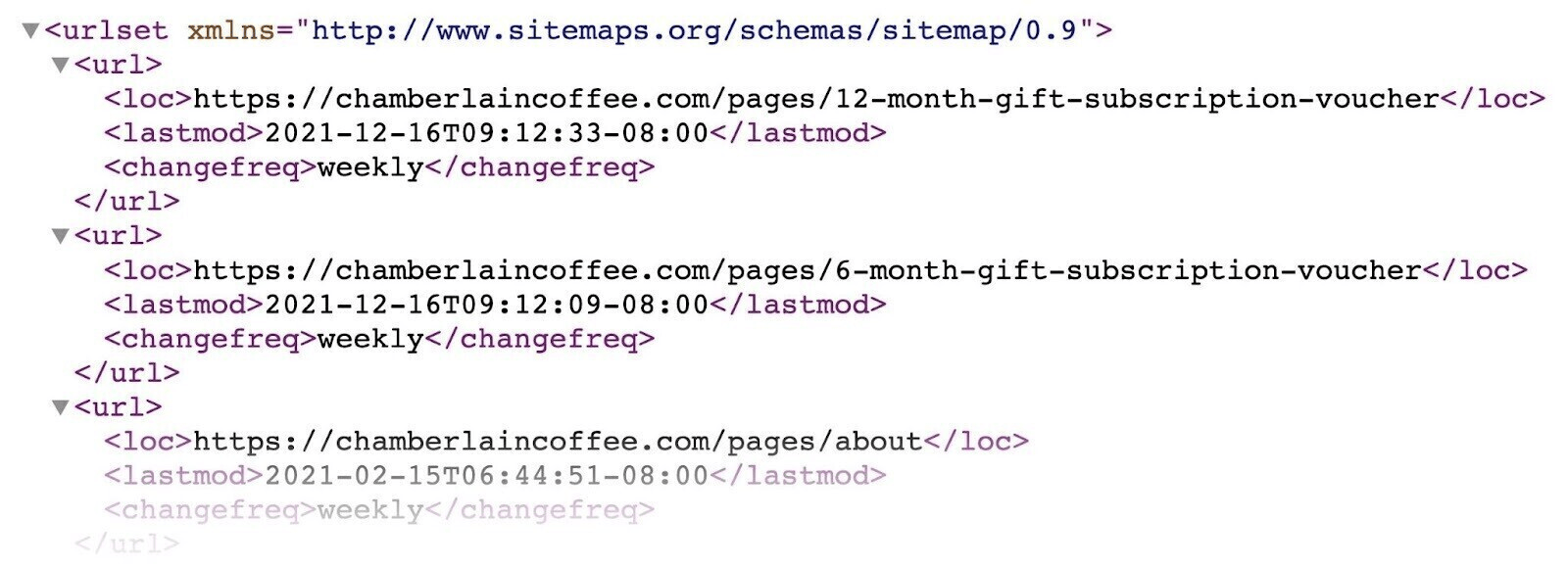
Alternatively, you can try a site search. Type “site:” into Google, followed by your domain and “filetype:xml.”
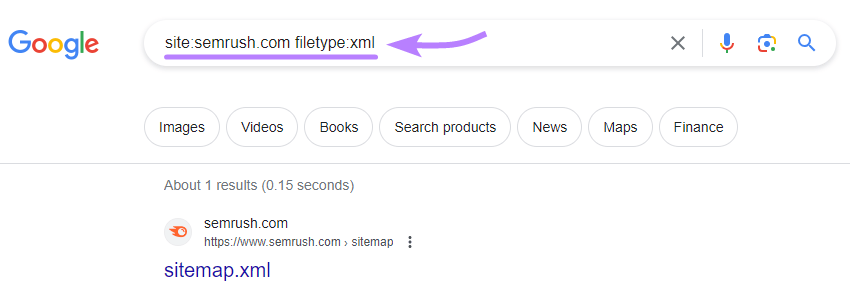
If no results pop up, you might not have one. In that case, follow our guide to creating an XML sitemap.
Your sitemap should contain every page you want Google to crawl and index. To check it manually, scroll through the XML file. Alternatively, use Site Audit to make the process easier.
Open the “Issues” tab in Site Audit and search for “sitemap.” There, you’ll find a list of errors, warnings, or notices to resolve.
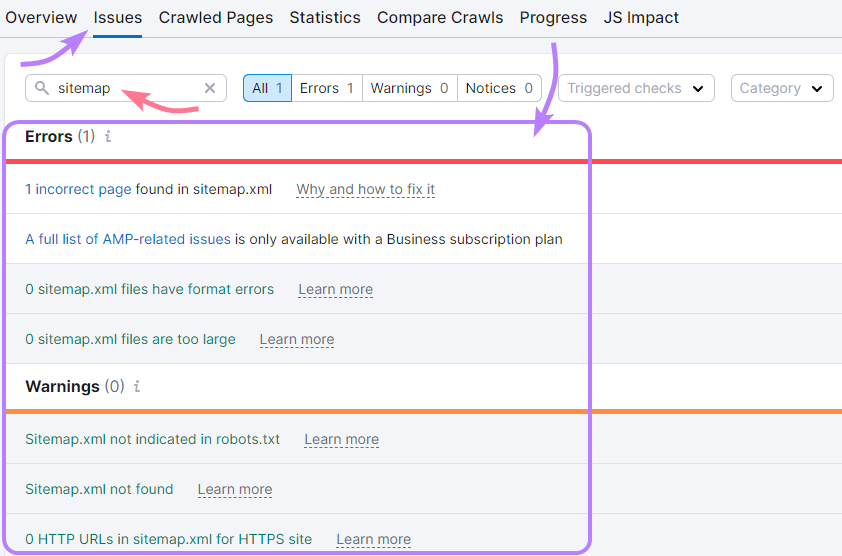
Next, check Google Search Console for your sitemap.
To submit your sitemap, click “Sitemaps” in the sidebar. Then, paste your XML sitemap’s URL into the field and click “Submit.”

12. Backlinks
Backlinks, or links pointing to one of your pages from another website, are a key organic ranking factor.
A backlink profile has two main properties—quality and quantity—and your audit should address both.
In some instances, you might consider disavowing low-quality backlinks using Google’s disavow tool. This action will keep Google from considering them as part of your backlink profile.
However, Google recommends doing this only if you have a “considerable number of spammy, artificial, or low-quality links pointing to your site.”
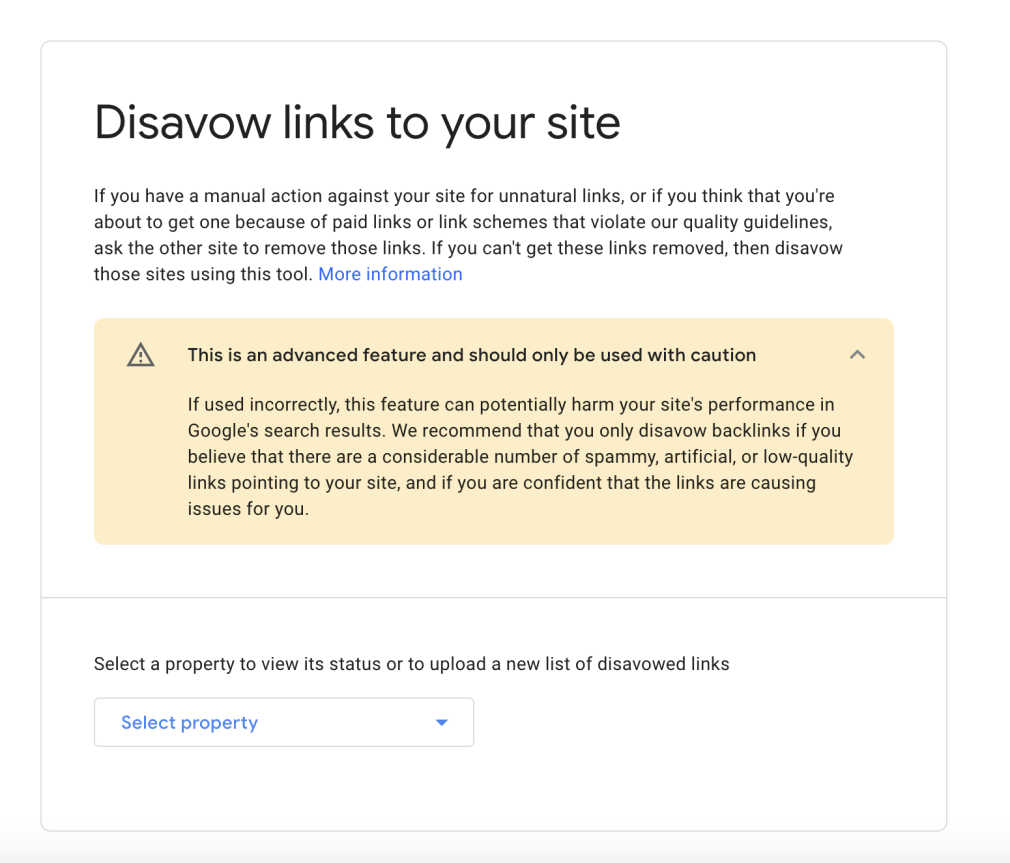
To find low-quality backlinks, use the Backlink Audit tool. Enter your domain into the search bar and click “Analyze.”

The report dashboard will provide a complete overview of your backlink profile, and you can click on each section for more detail.
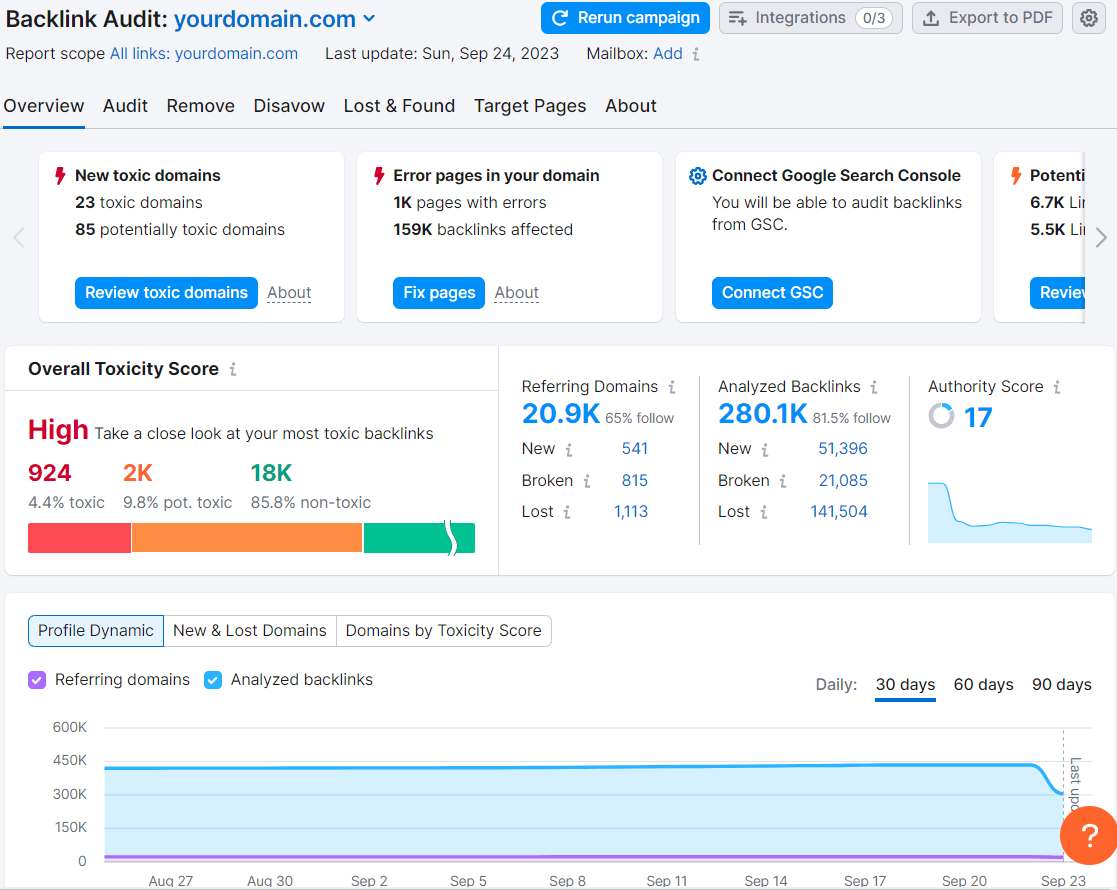
To see all your backlinks, click the number underneath “Analyzed Backlinks.”
Export this data into a spreadsheet or manually filter the results to find spammy or low-quality links. If you need to disavow them, follow our guide to disavowing backlinks.
To improve the quantity of your backlink profile, use the Backlink Gap tool to find new linking opportunities.
Enter your URL into the top field, add up to four competing domains, and click “Find Prospects.”
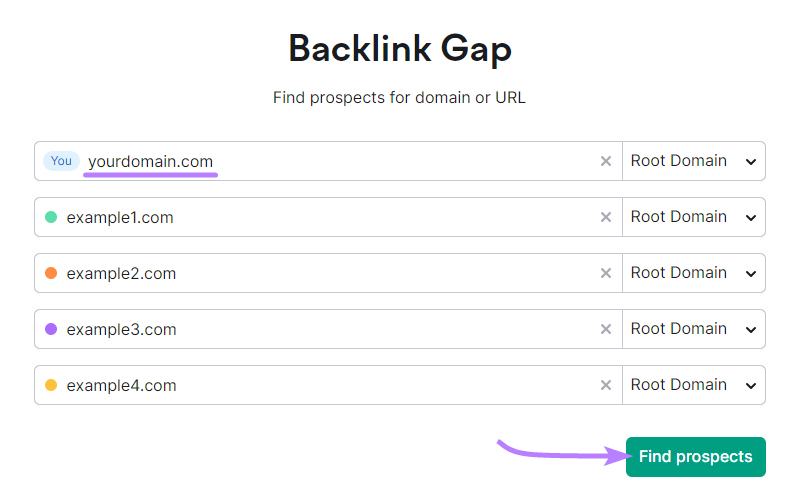
This generates a report showing the referring domains your competitors have, but you don’t. You can use this as the basis for a new link-building strategy.
13. Content Quality
How well your page content meets the search intent of its target keyword affects its SEO performance.
During your enterprise SEO audit, it can help to manually review your most important pages to ensure they still meet search intent.
To get the best results, do this one page at a time. The search intent a page targets affects the criteria it needs to rank effectively. Doing this manually allows you to conduct a more in-depth page analysis.
First off, list your top pages. These might be pages that generate the most conversions or attract the most organic traffic.
Then, conduct a deeper analysis. How does the content compare on your page with top-ranking competitors for the primary keywords? Look for opportunities to close quality gaps.
The best opportunities to improve your ranking will come from on-page SEO factors, like the following:
- The relevance of your content to search intent
- Effective use of primary and secondary keywords
- Well-optimized title tags and meta descriptions
- Effective use of images and internal links
You don’t have to do the entire process manually. After reoptimizing your top pages, use a tool like On-Page SEO Checker to identify other opportunities for improvement, such as using the target keyword in the body text or making the text content more readable.
The main dashboard provides a complete overview of optimization across your website.
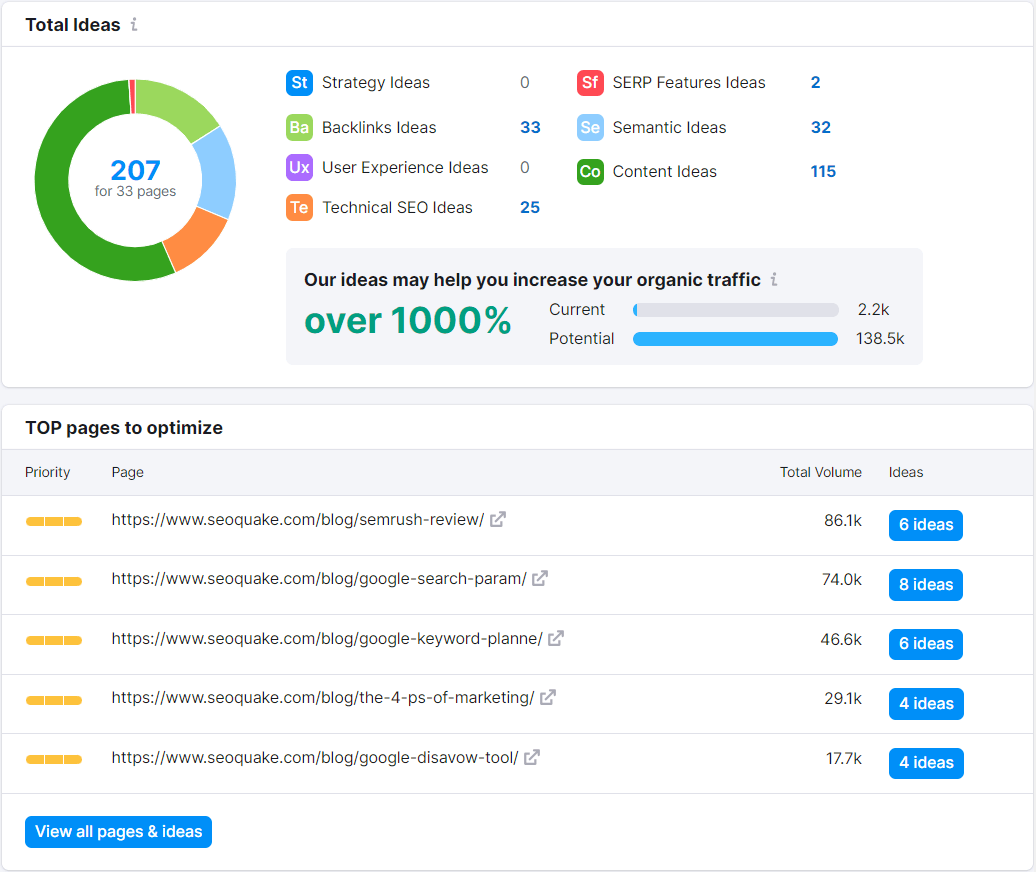
On-Page SEO Checker also highlights specific pages with optimization opportunities, like sites where you can earn backlinks. Click each one to see more details about how to improve content quality.
14. Images
Google Search drives organic traffic to most websites. But Google Images presents lots of opportunities, too.
Analyzing and improving image SEO as part of an enterprise SEO audit can bring in more valuable traffic.
Optimizing images involves:
- Writing descriptive file names instead of generic ones
- Using high-quality images
- Reducing image file size using compression
- Using a web-appropriate format, like JPEG or WebP
- Writing descriptive image alt text (or alt tags) that contains your primary keywords
Enterprise websites can host thousands of images, which makes it impossible to check them all by hand.
Instead, use Site Audit to find under-optimized images automatically. Head to the “Issues” tab and look for errors, warnings, or notices regarding images or alt text.
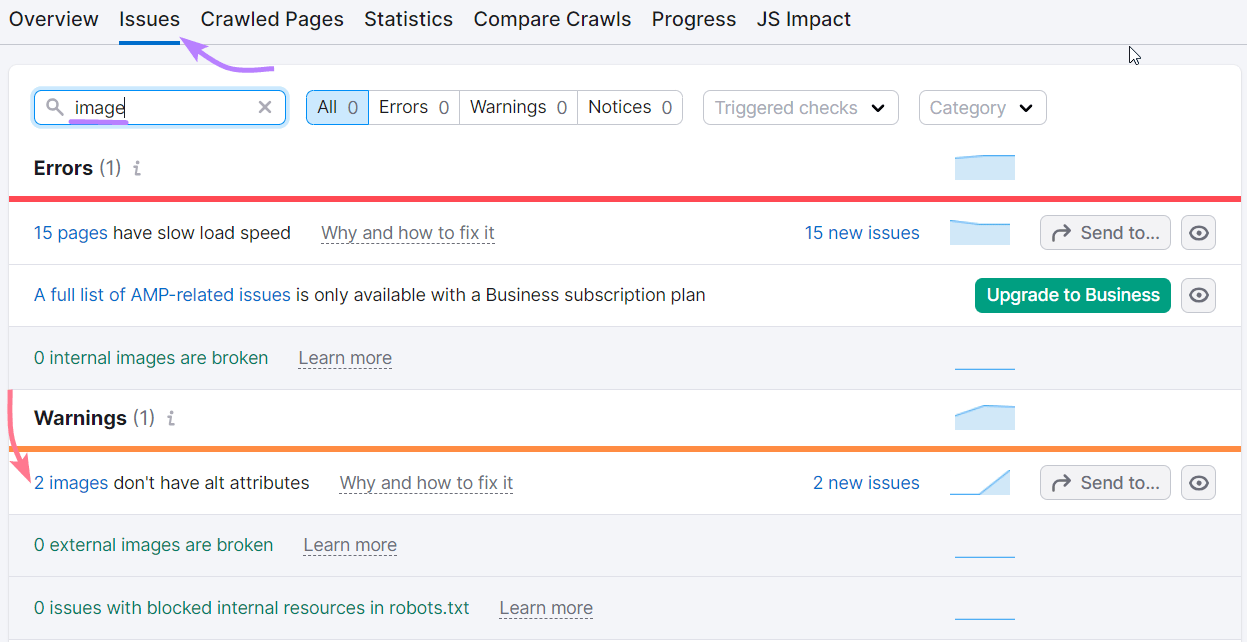
Click on each issue to see under-optimized images and create a plan to reoptimize them. This gives you a better chance to attract more traffic from Google Images.
15. 4XX Status Codes
HTTP status codes are three-digit numbers that describe a webpage’s status.
Codes that begin with a “4” (known as 4XX status codes) indicate a client error or a broken page. Fixing these as part of an audit will help maintain SEO performance and good user experience.
When a page breaks and displays a 4XX code, like a 404, web visitors won’t be able to see or access the content anymore.
Why does this happen? Many issues can cause a webpage to return a 4XX code, like a wrong URL or a webpage that’s moved:
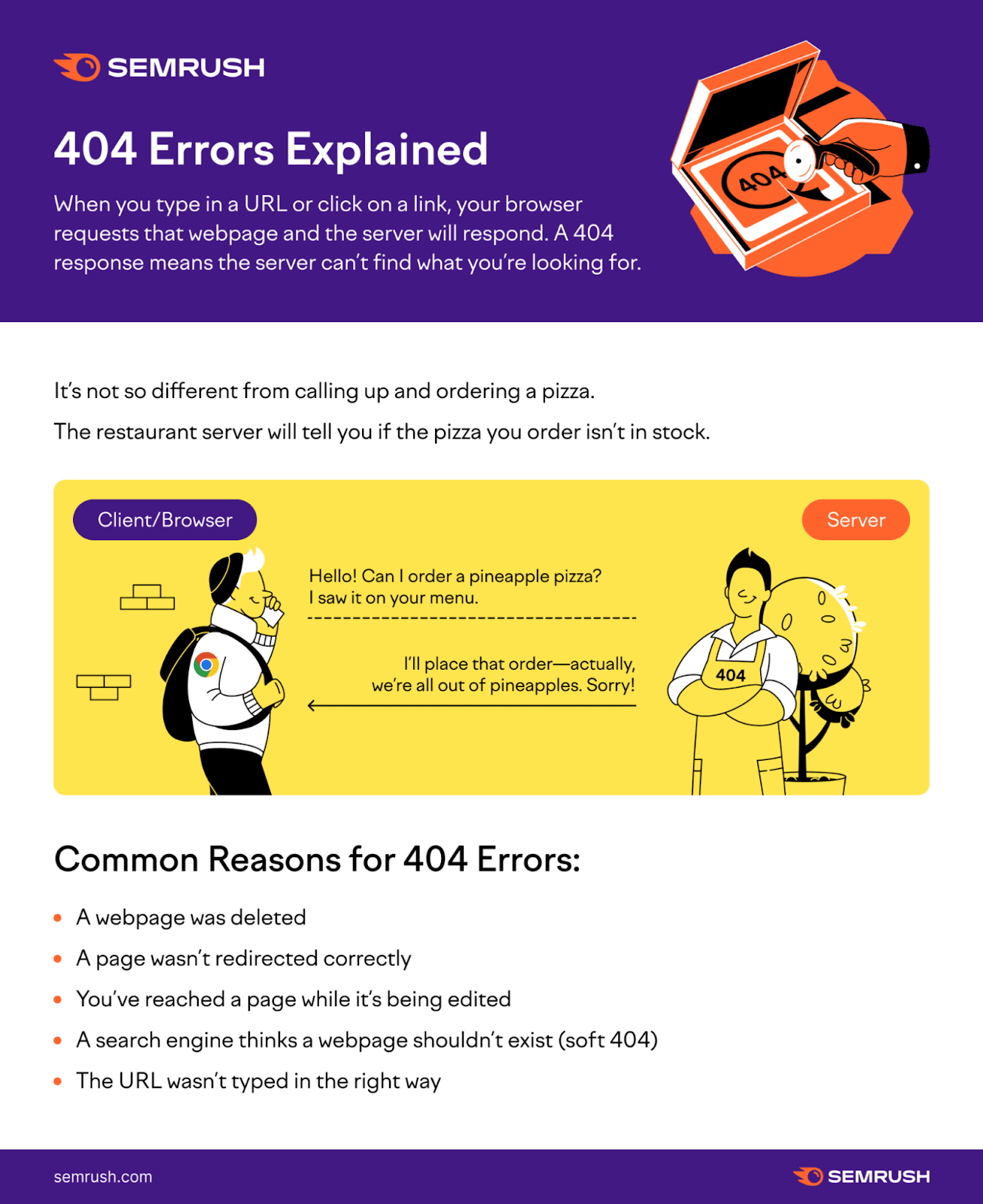
However, the URL can continue to rank in Google search results, and users can still reach it through internal or external links.
If the page ranked well for its target keywords before breaking, it will gradually lose its rankings. This means the quicker you fix the error, the sooner the page will stabilize in SERPs.
But even if the page didn’t rank meaningfully, you should still fix 4XX errors. If you don’t do it regularly, users will start to run into broken pages, which can damage their experience.
Thankfully, Site Audit makes it easy to find and fix these errors. The main “Issues” dashboard flags pages returning 4XX status codes as errors.

Click on the item to see a list of affected pages and a confirmation of what 4XX code a page returns.
You can then work on fixing the errors. This could mean reinstating the content to the URL or setting up a 301 redirect that pushes users onto the next most relevant page.
16. Structured Data
Structured data gives Google more clues about what your content is or what it does.
Using it on your site opens up opportunities for your keyword rankings to turn into rich results, which can boost CTR.
Rich results include things like ratings or how long it takes to make a recipe.

Many different types of structured data exist, and you can describe them using a code language called Schema markup.
Google Search supports 30 categories, including:
- Articles
- Datasets
- Events
- FAQs
- Podcasts
- Videos
Each category allows you to define elements of your content.
For example, you can wrap an FAQ section on a product page in FAQ Schema markup. This helps Google understand that section of content better.
As a result, your FAQs might appear under your listing on the search results page.
Google offers a free tool to help you implement structured data called Structured Data Markup Helper.
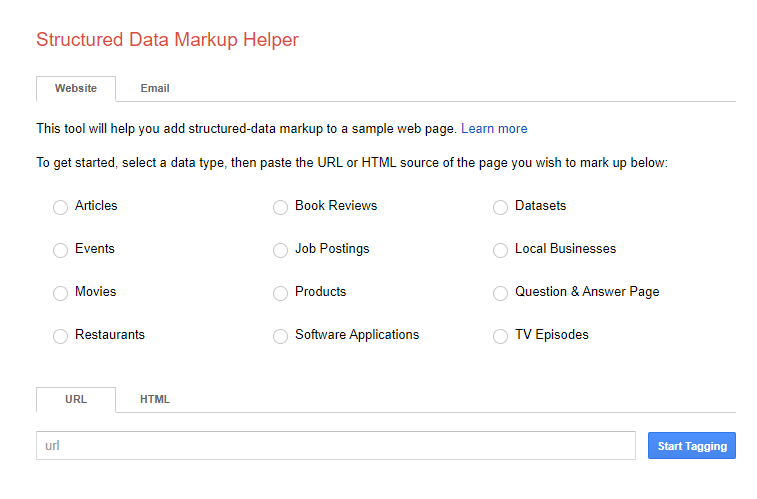
You can use it to generate the code to insert into your pages or to validate existing website code.
Check any existing Schema markup during your enterprise SEO audit, and look out for new opportunities to implement more.
17. Redirects
Redirects are instructions to internet browsers to send users from one URL directly to another. An important part of website maintenance, they help you fix 404 errors and maintain good user experience.
However, redirects can also cause problems. For example, if a redirect goes to a page that already redirects to another page, it creates a redirect chain.
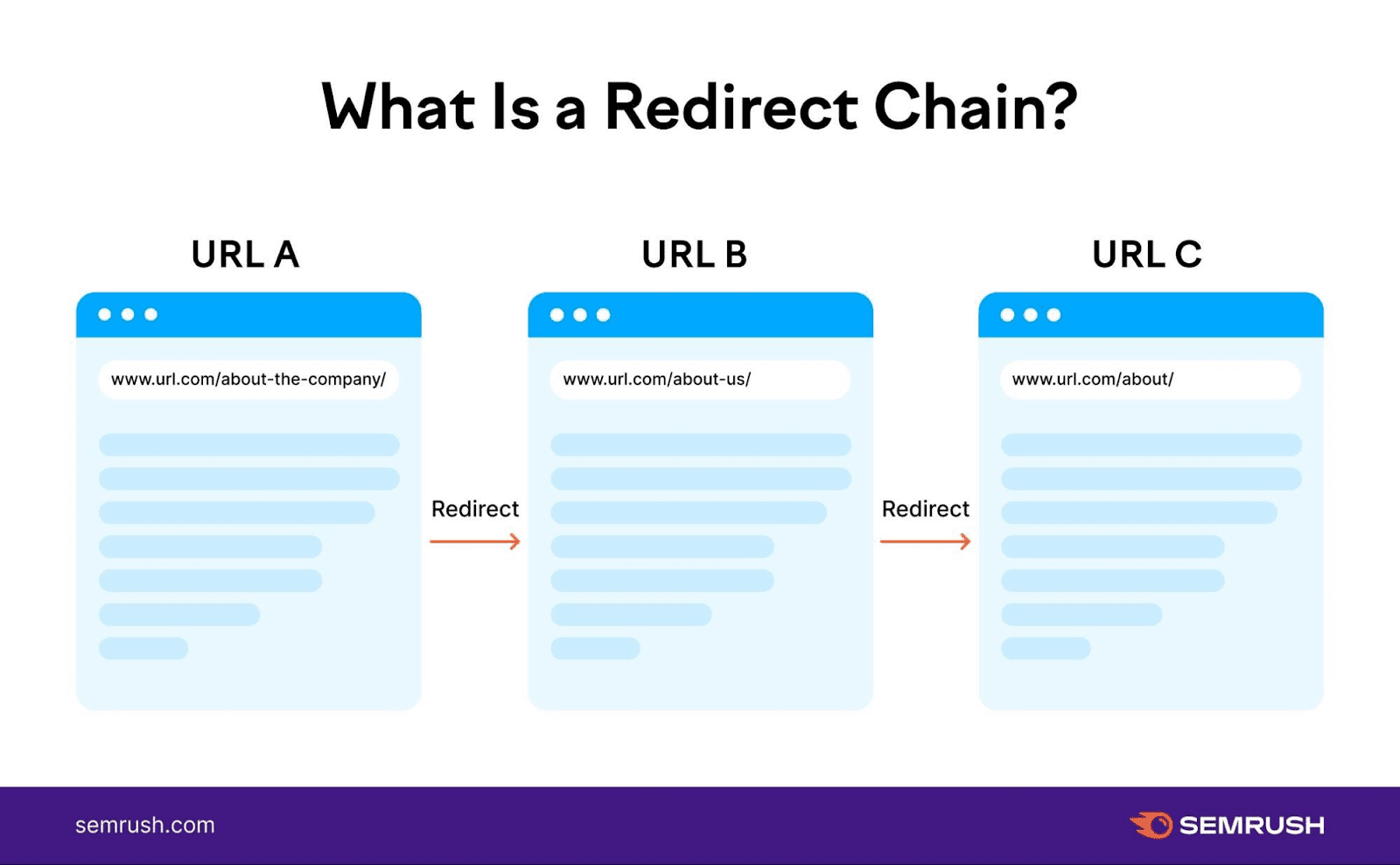
If redirect chains become too long, they can create crawling issues and dramatically increase page speed.
To fix redirect chains, you have to redirect both old URLs directly to the new URL.
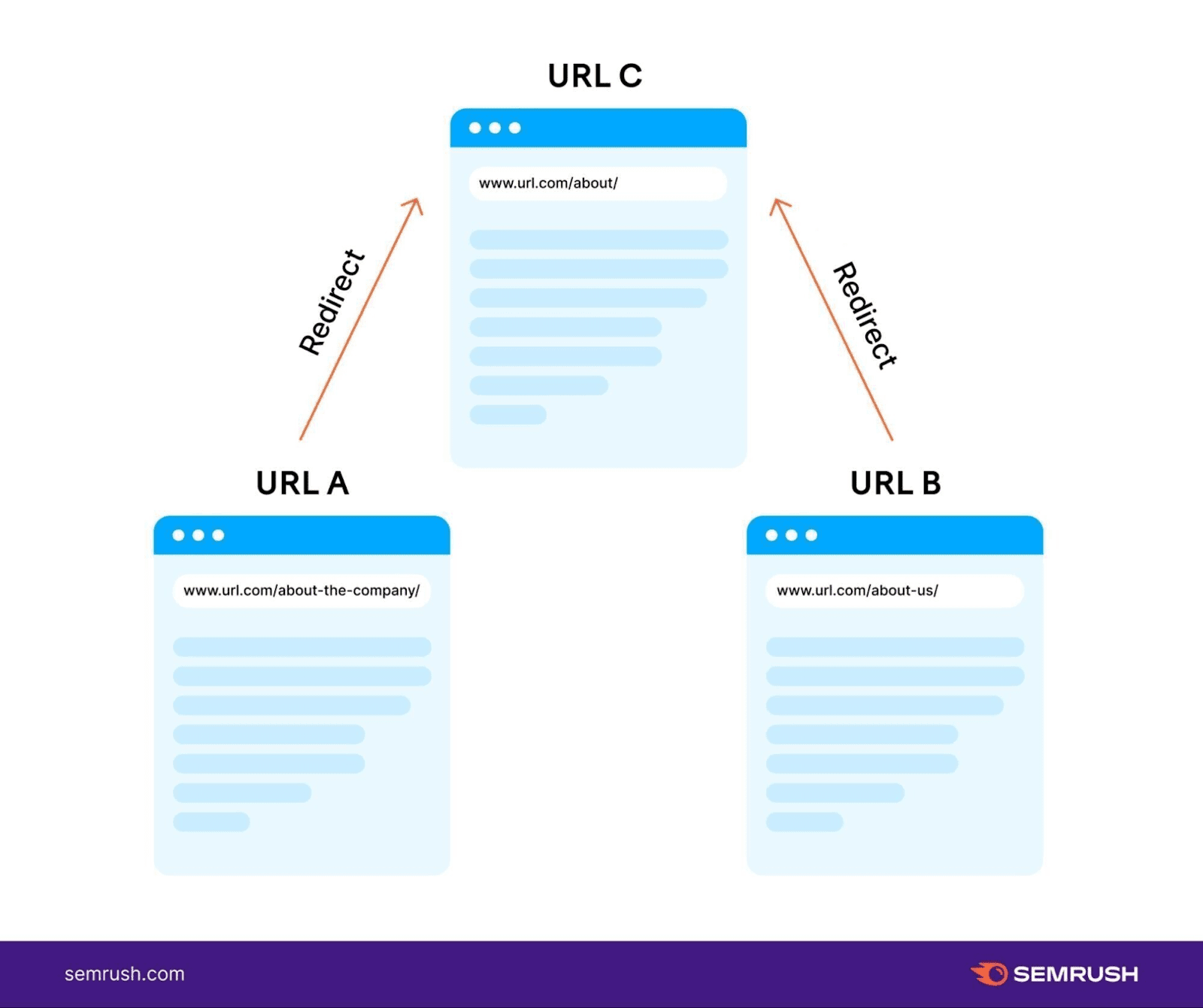
Redirect loops, when a URL redirects to another URL, which redirects back to the first, are also problematic.
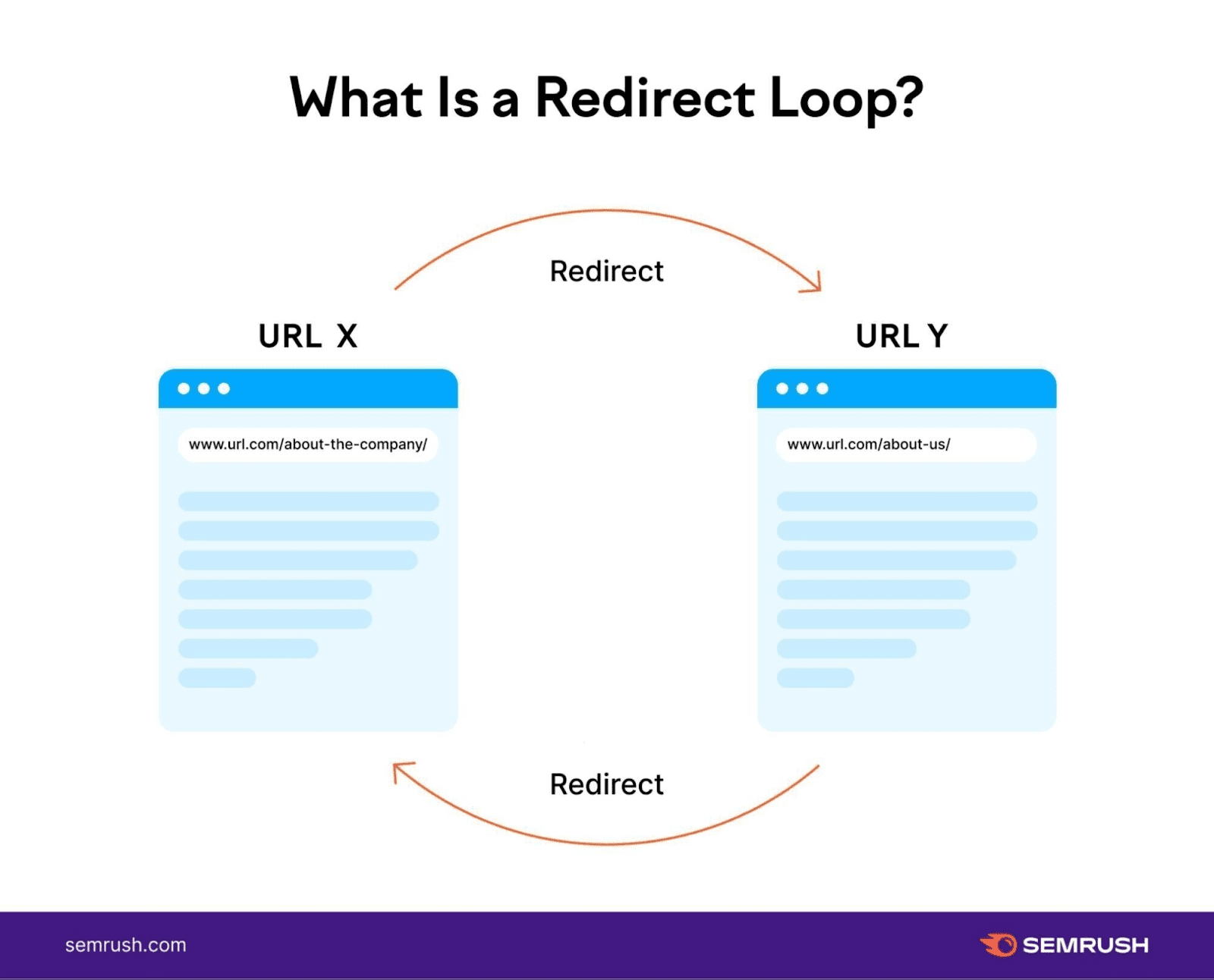
To fix redirect issues, you first have to find them. You can use Site Audit to do this.
Head to the “Issues” tab and look for any errors or warnings regarding redirect chains or loops.
Read our full guide to redirects for more on the process.
Audit Enterprise Sites to Improve SEO Rankings
SEO is one of the best tools for enterprise businesses. Regular website audits ensure your site stays primed to attract organic traffic, increasing your chances of generating organic conversions.
Use the above list to guide your first enterprise SEO audit, but remember all sites are unique. Don’t hesitate to revise the audit process to suit your website’s needs.
Sign up for Semrush’s suite of tools and start your enterprise SEO audit today.
منبع: https://www.semrush.com/blog/enterprise-seo-audit/